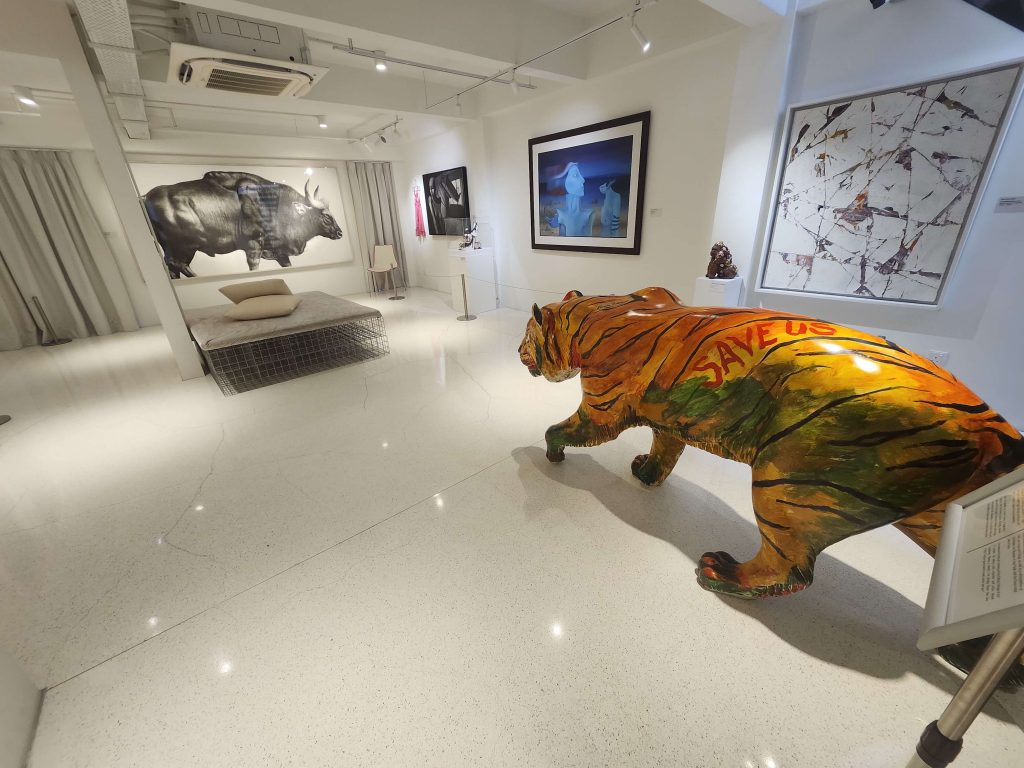How would I describe Kuala Lumpur? I’d say, for a large international capital city, it’s comfortable. It’s got a clean, modern central area, some more dowdy (but safe) areas around it, incredible food, beautiful parks, mostly easy walking infrastructure, and – for a large SE Asia city – relatively light traffic.
Would I live there permanently? Probably not. But it’s been a perfect place to get a nice taste of a big city infrastructure every 30 days from my travels in Indonesia (because of their 30 day tourist visa restrictions) and Borneo (because I have to fly through KL to get to/from there).
The General City of KL
The Sultan Abdul Samad building, with its Moorish design influence, is one of the most beautiful buildings in KL. It was built in the late 19th century to house the British administration and got its current name in 1974 after the reigning sultan at the time of its construction.
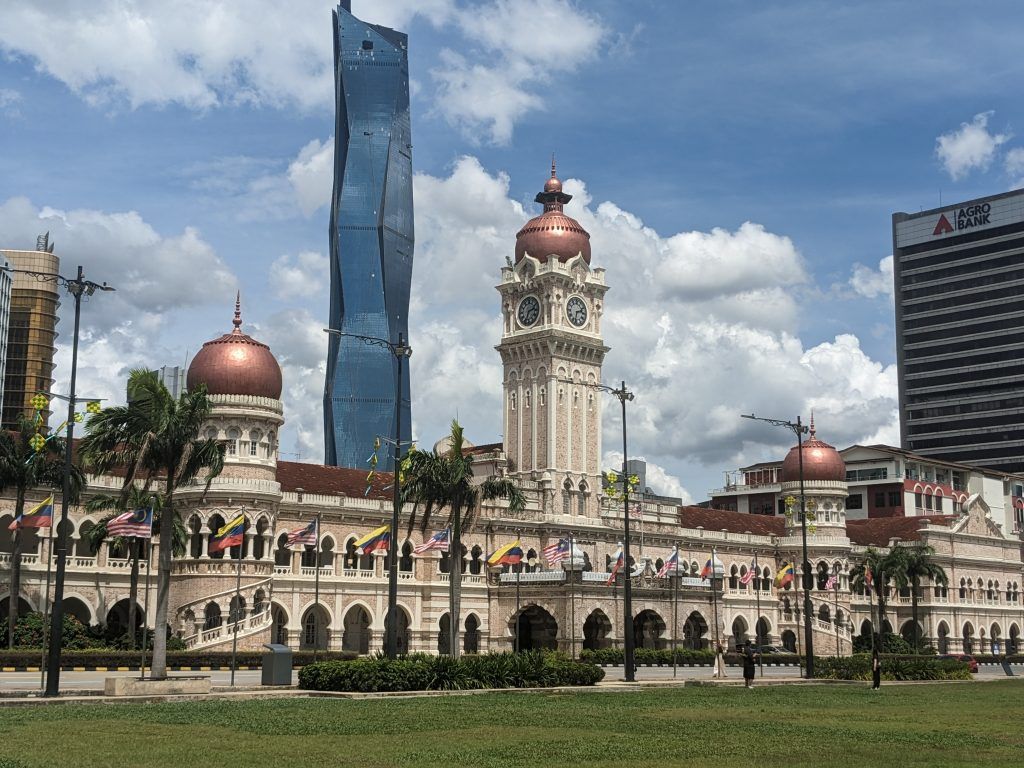
Masjid Jamek is one of the oldest mosques in Malaysia. It was actually designed by the English architect Arthur Benison Hubbak and built in 1908. It was designed to loosely reflect Indian Muslim Mughal architectural and was funded by both the local Muslim community and the British government.
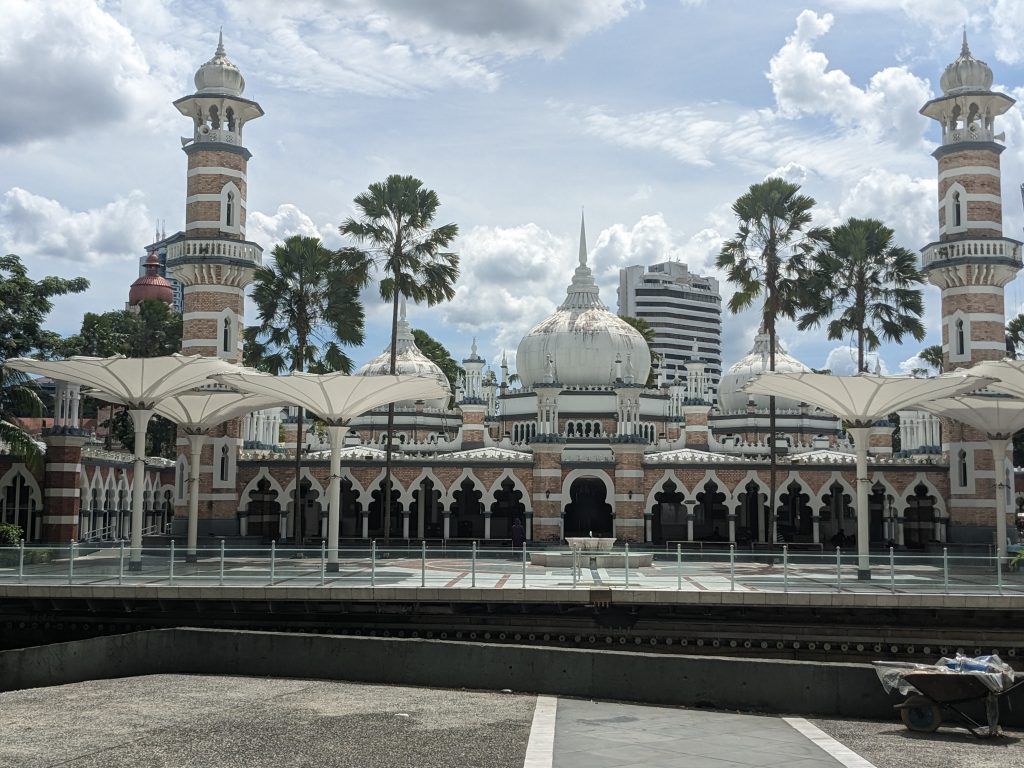
Modern KL: a Citi branded building, next to a Bank of China branded building, with a cute Malay language iPhone add over the street below.
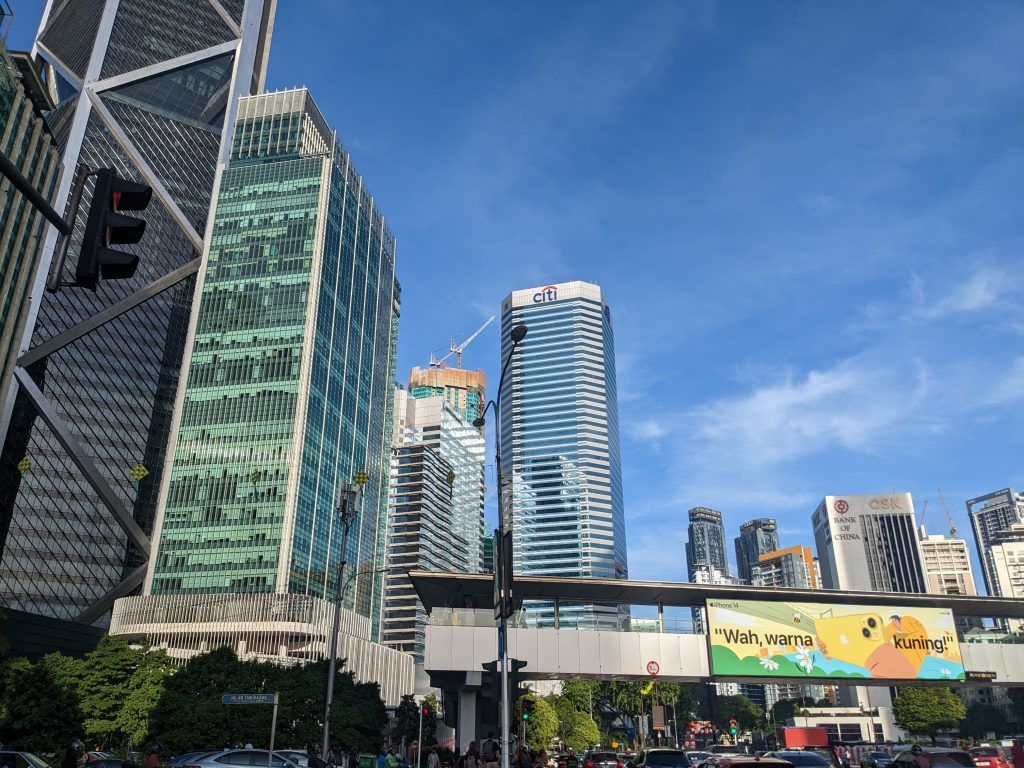
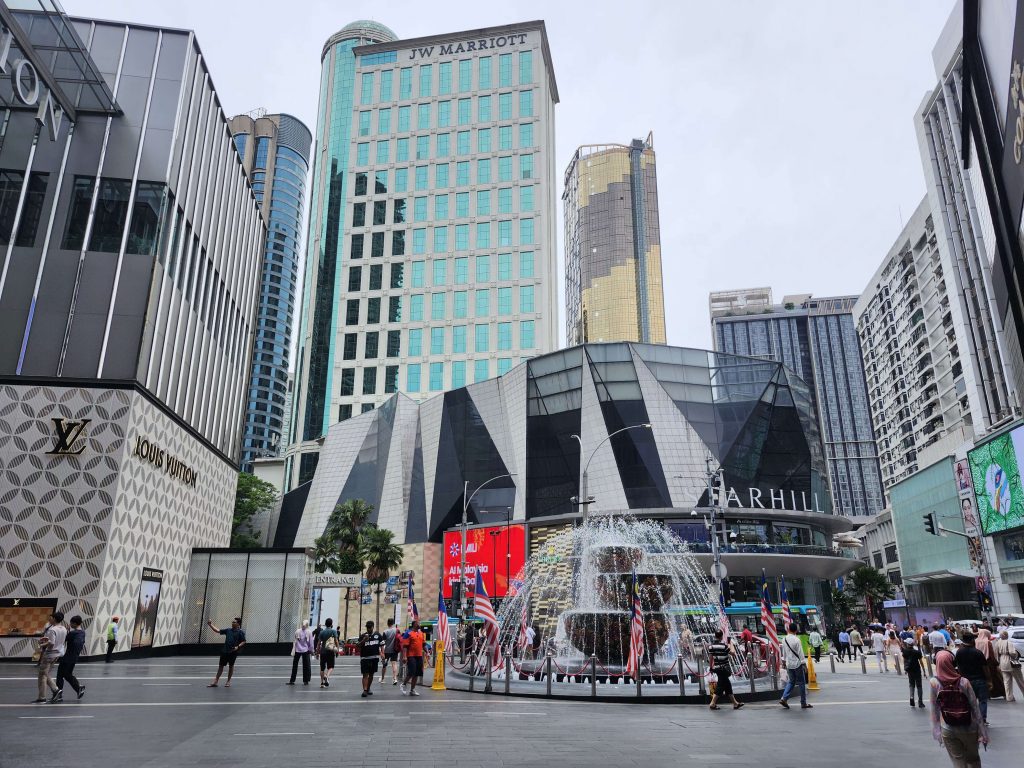
One of the nice things about KL is how lush it can be in places.
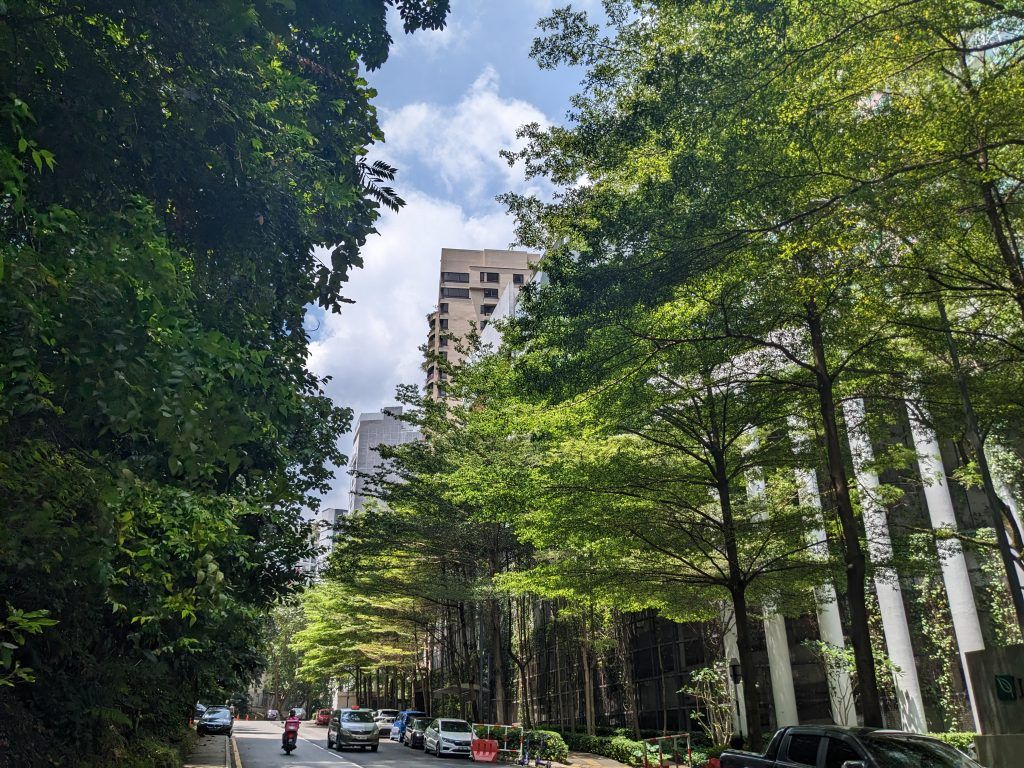
The well known food street of Jalan Alor. I found it overcrowded, overpriced and underwhelming.
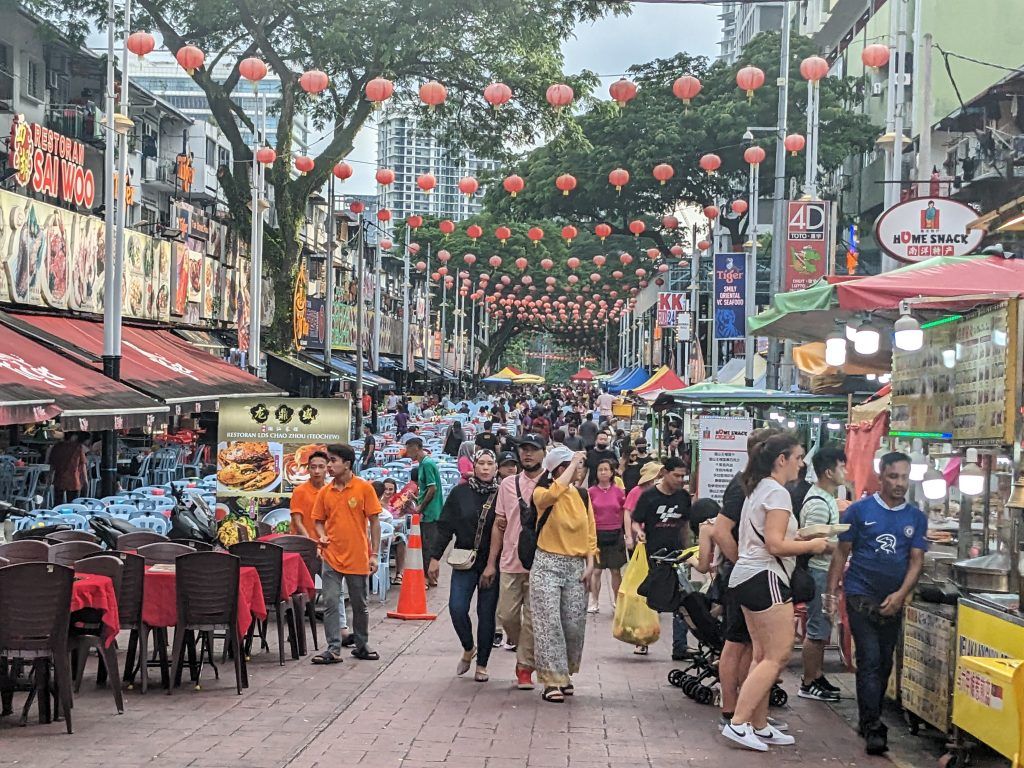
There was nice urban art throughout the city.
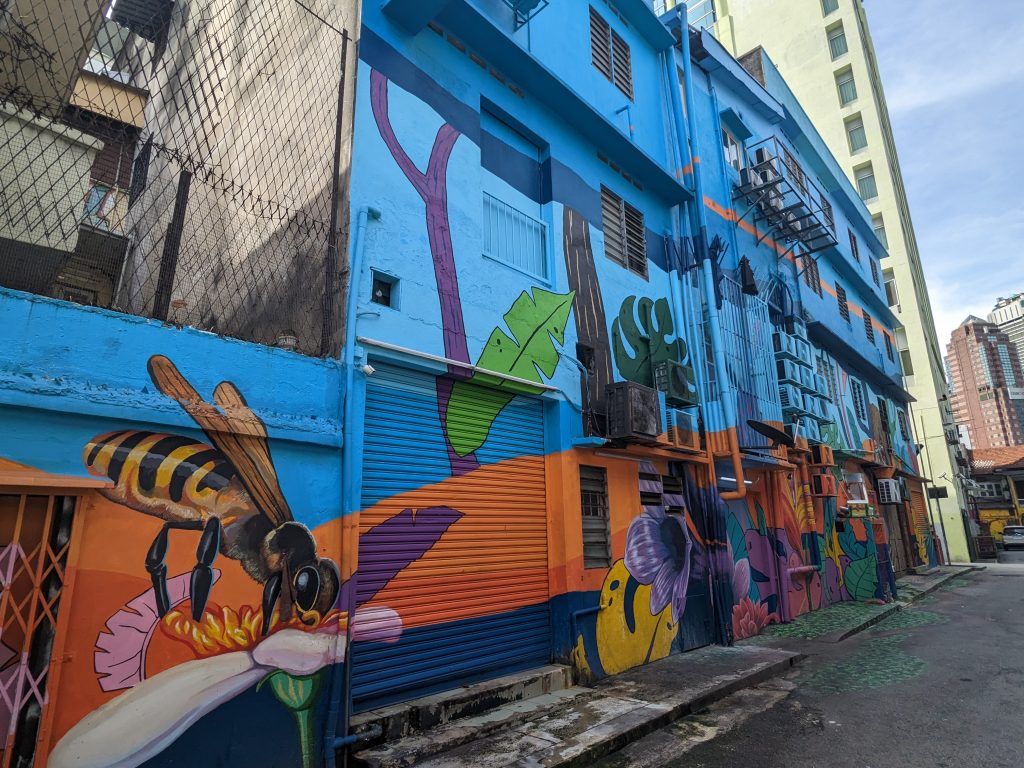
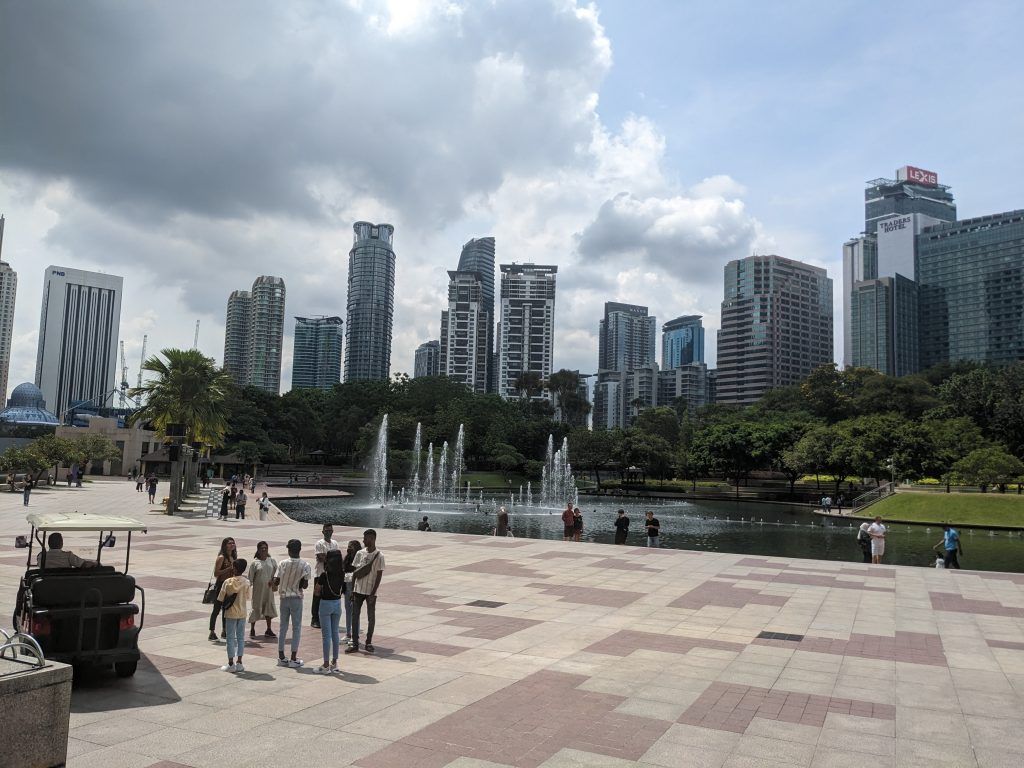
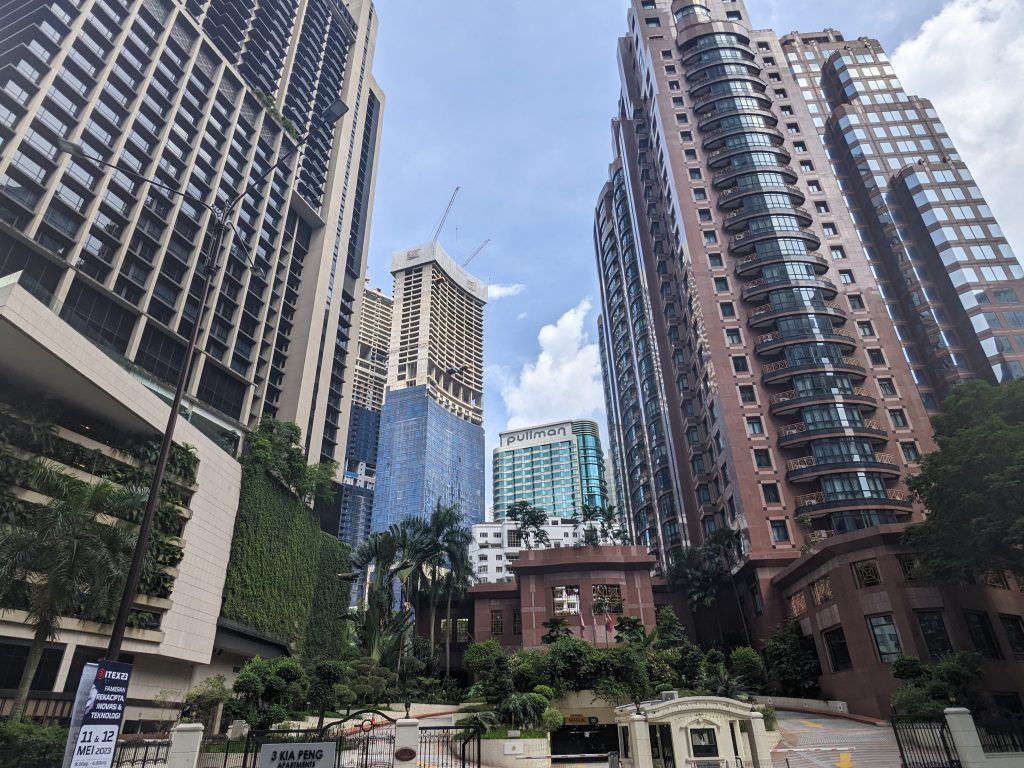
Just outside the main areas were numerous run down apartment buildings where it seems a lot of the urban service workers lived.
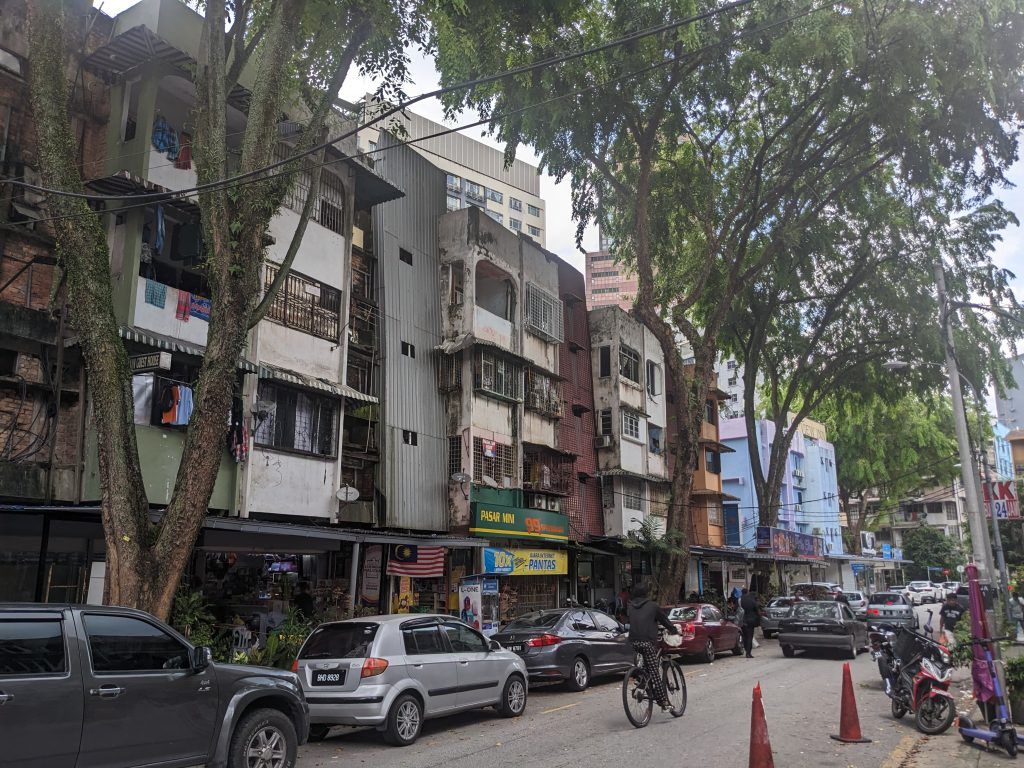
A good friend of mine from SoCal introduced me to a high school friend of his who has been living in Asia for over 20 years. He’s been in KL for the last 5 years, since that’s where his wife is originally from.
We got a chance to meetup at the Heli Lounge Bar. One one hand, the bar is really just a bunch of tables and chairs set up on a former helicopter pad on the top of a building. On the other hand, with the views and the sunset, it’s got an amazing feeling to it…especially after a couple of lychee martinis.
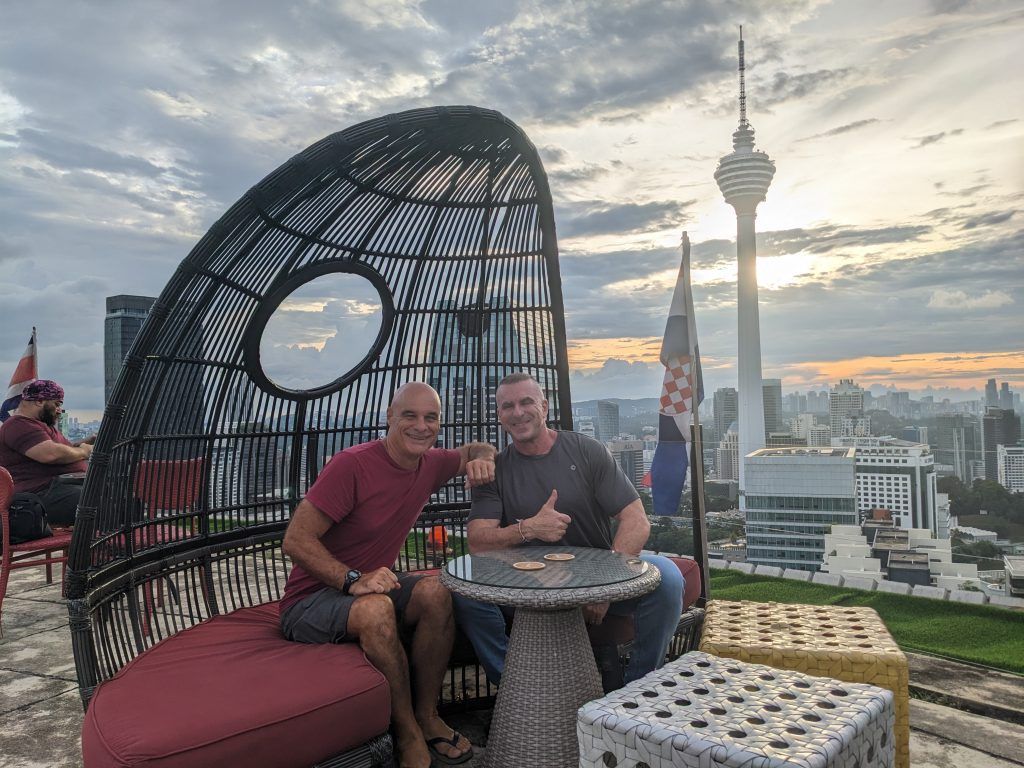
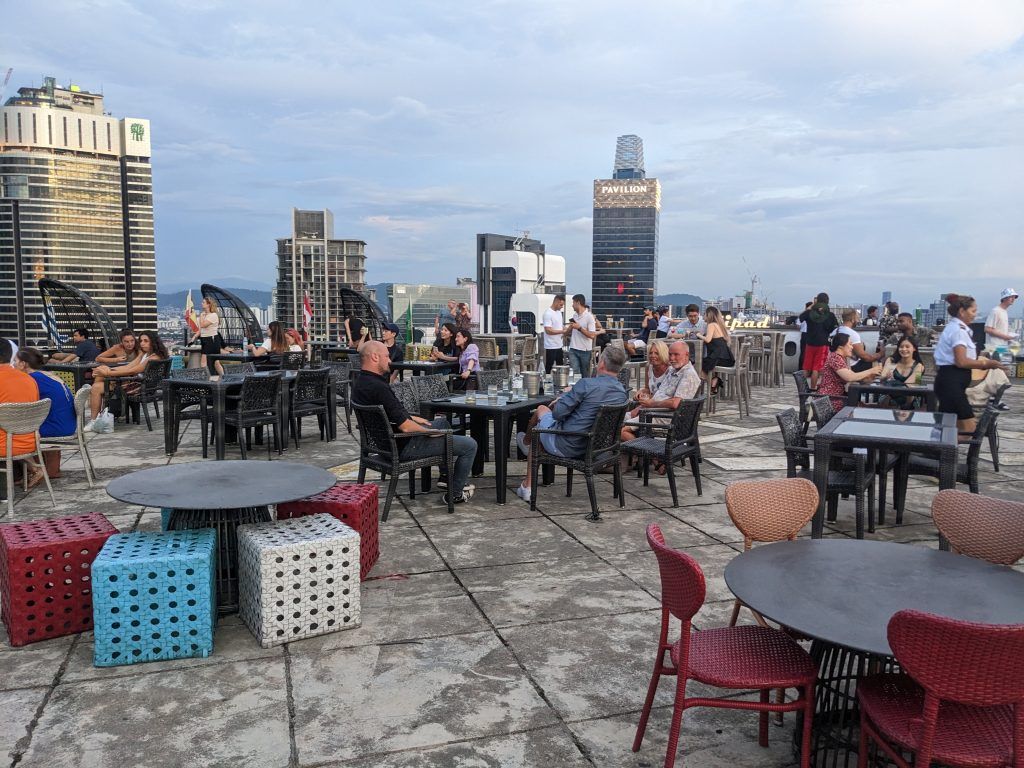
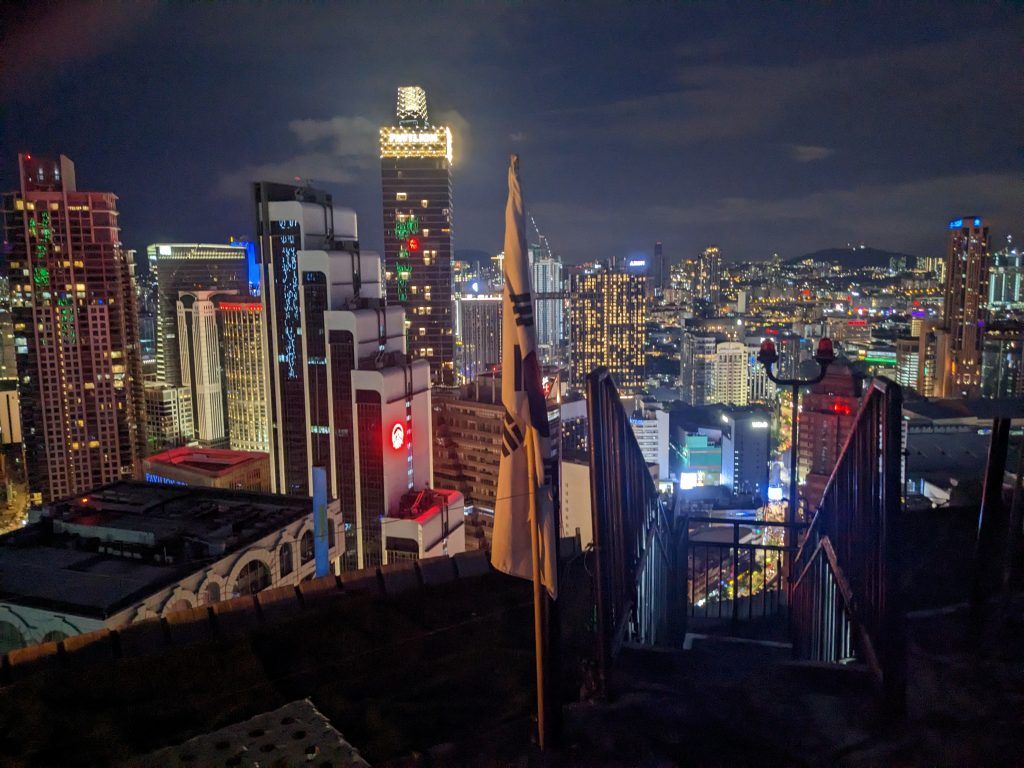
Petronas Towers
The Petronas Towers are the dominant landmark in Kuala Lumpur. When they were completed in 1998 they were considered the tallest buildings in the world. That title lasted until 2004. Their long, graceful design is based on the Arabic octagram shape called the Rub-el-Hizb. As you can see in the next three pictures, their moods change over the course of the day and evening.
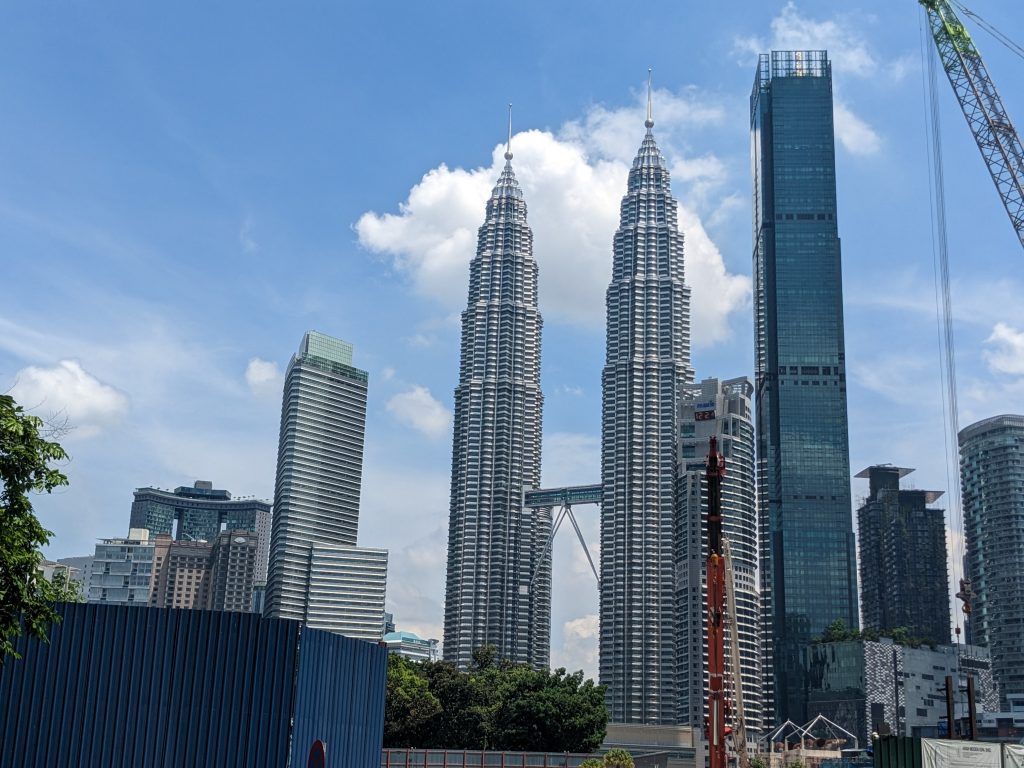
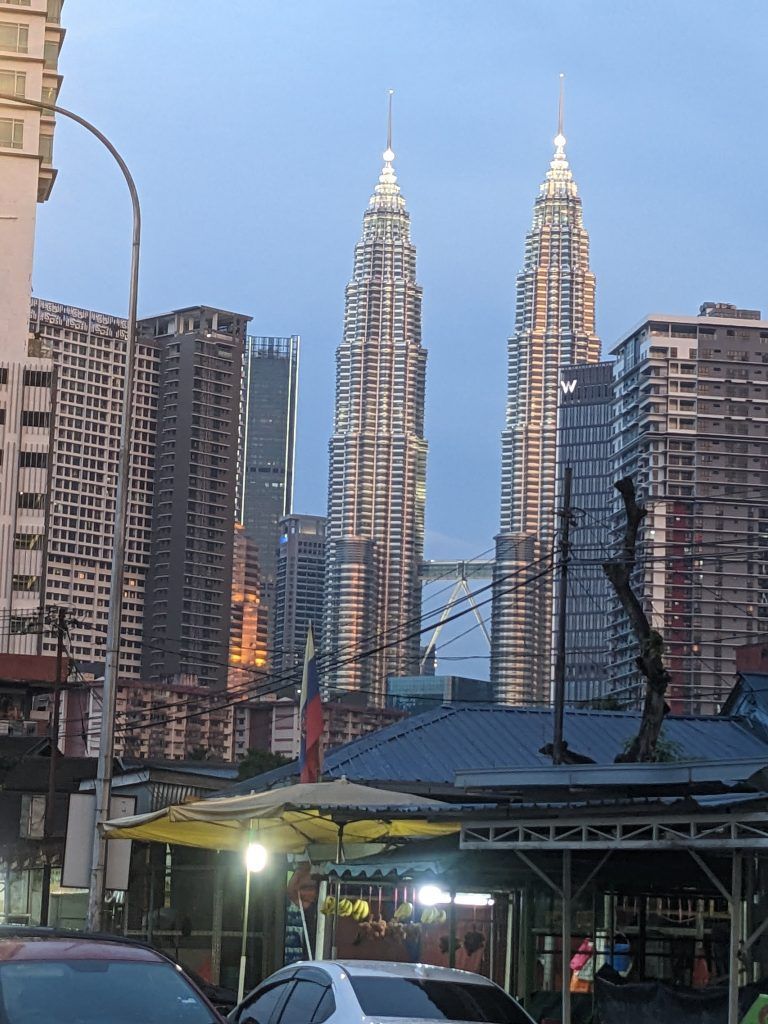
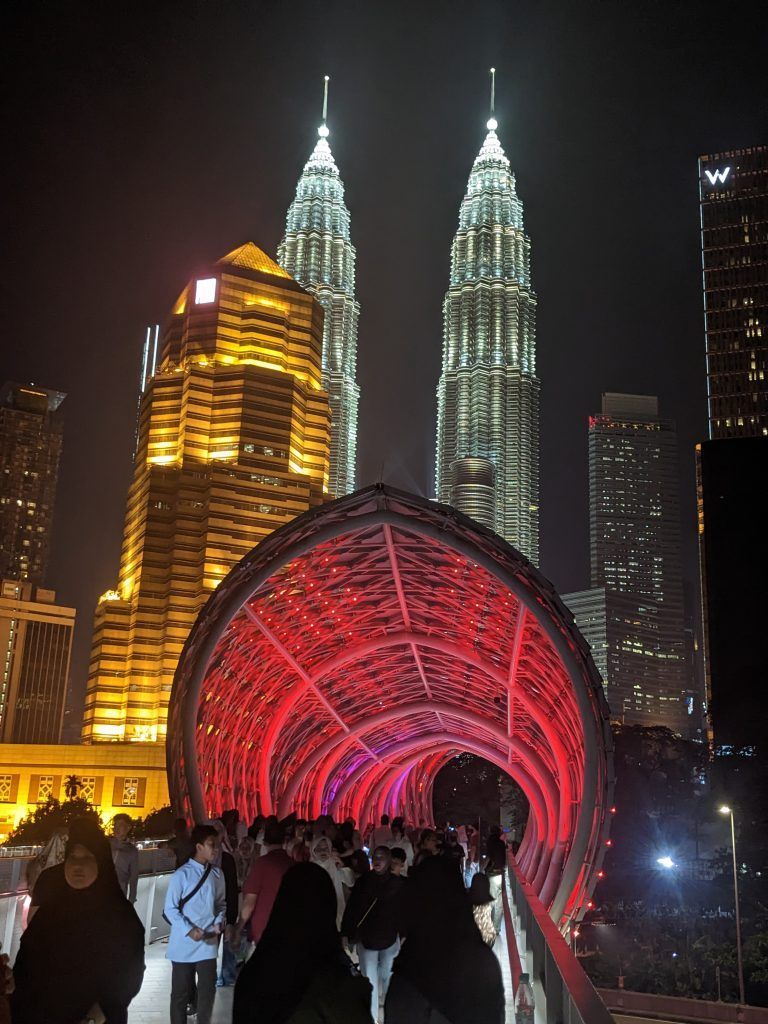
I took the tour to the bridge that connects the building and the observation deck on one of the towers. The fascinating thing is that the bridge isn’t even connected to the buildings at the crossing point. There’s a space there that allows the bridge to move in large winds and not put too much pressure on the towers. The bridge is connected at the base of its two inverse wings below the crossing point.
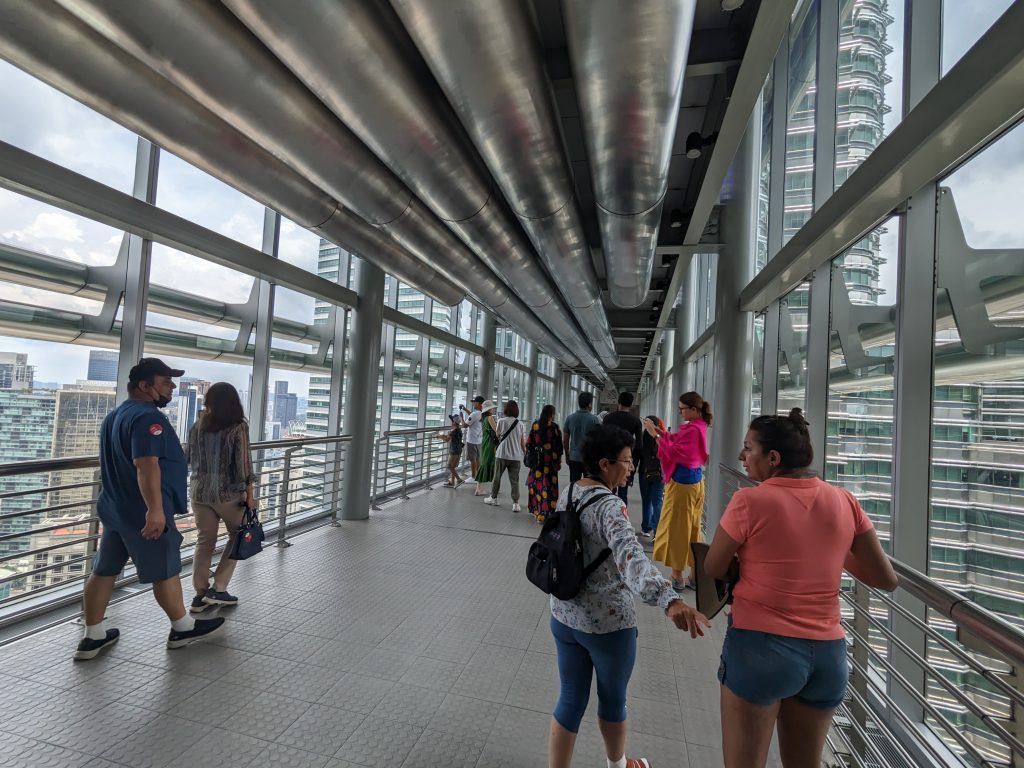
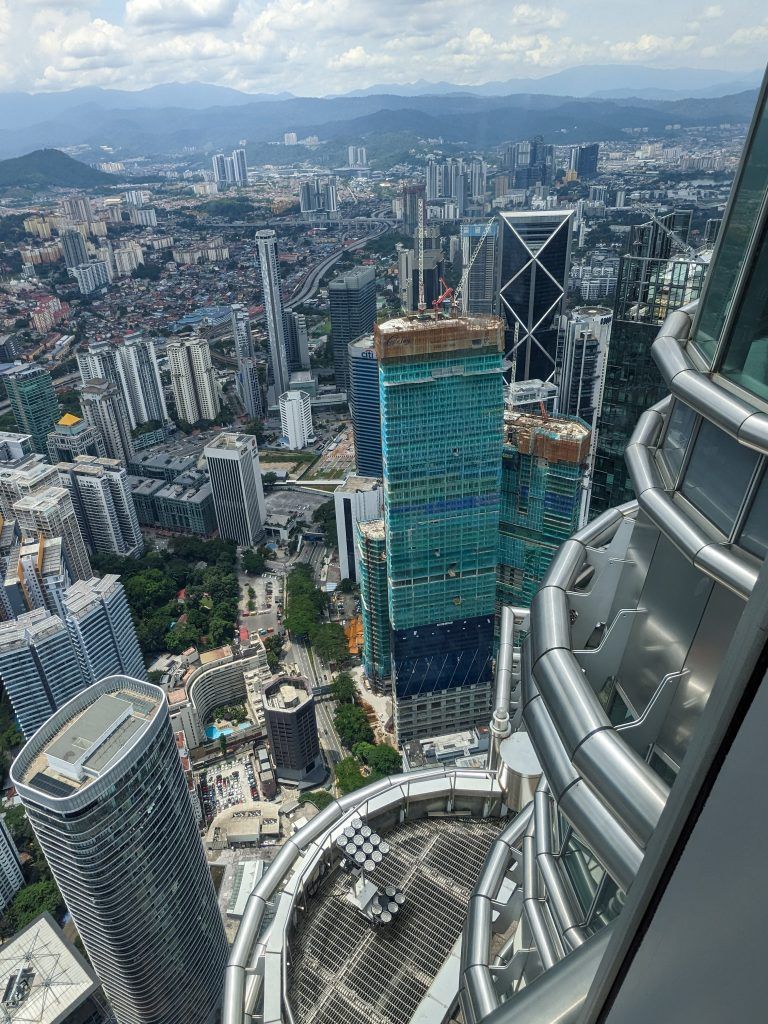
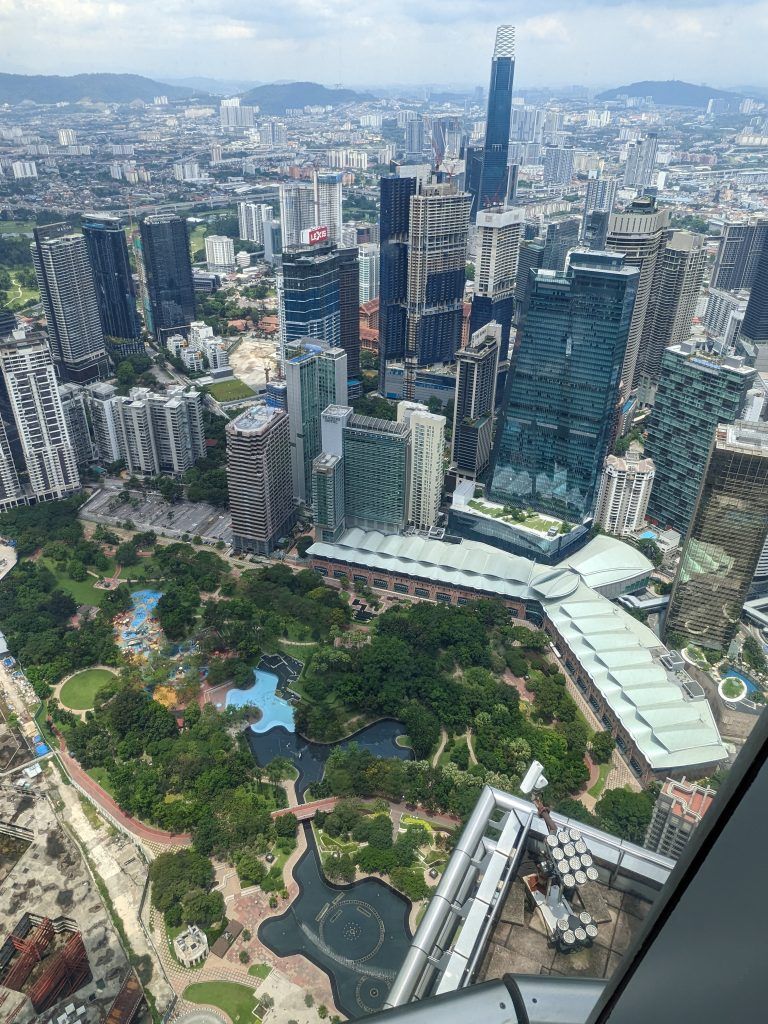
Looking across at the other tower.
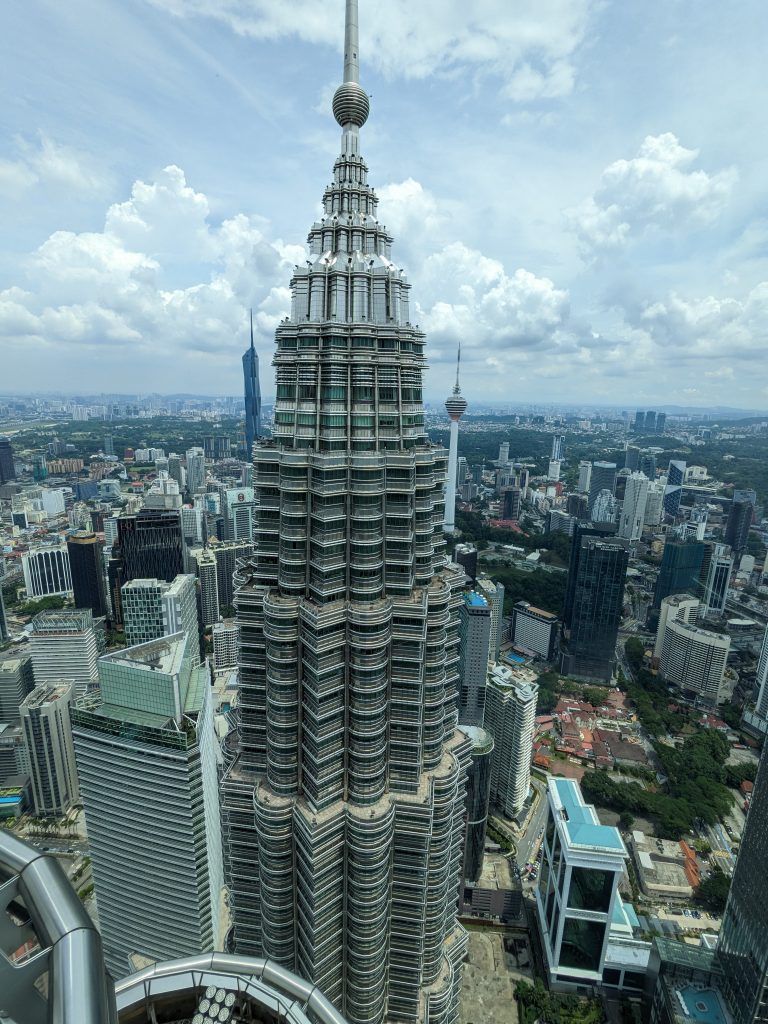
KL Tower and KL Forest Eco Park
At a height of 420 meters the KL Tower is the 7th largest communications tower in the world. There’s an observation deck at 276 meters. Because this all sits on top of a decent sized hill, it can provide some nice views of the city.
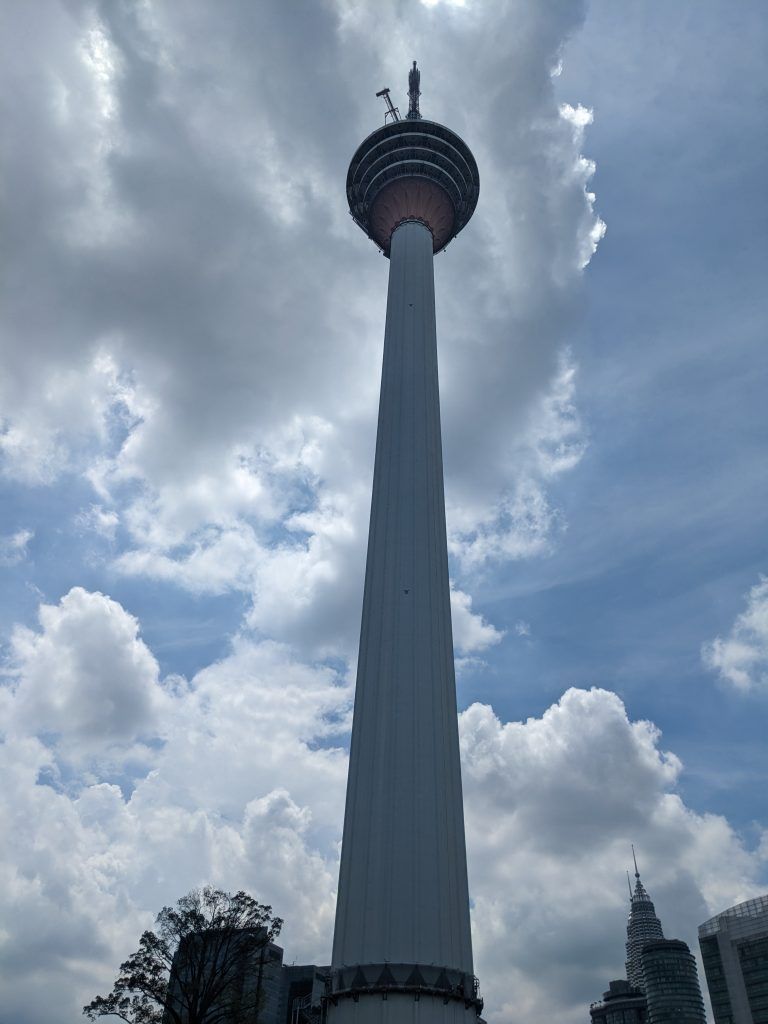
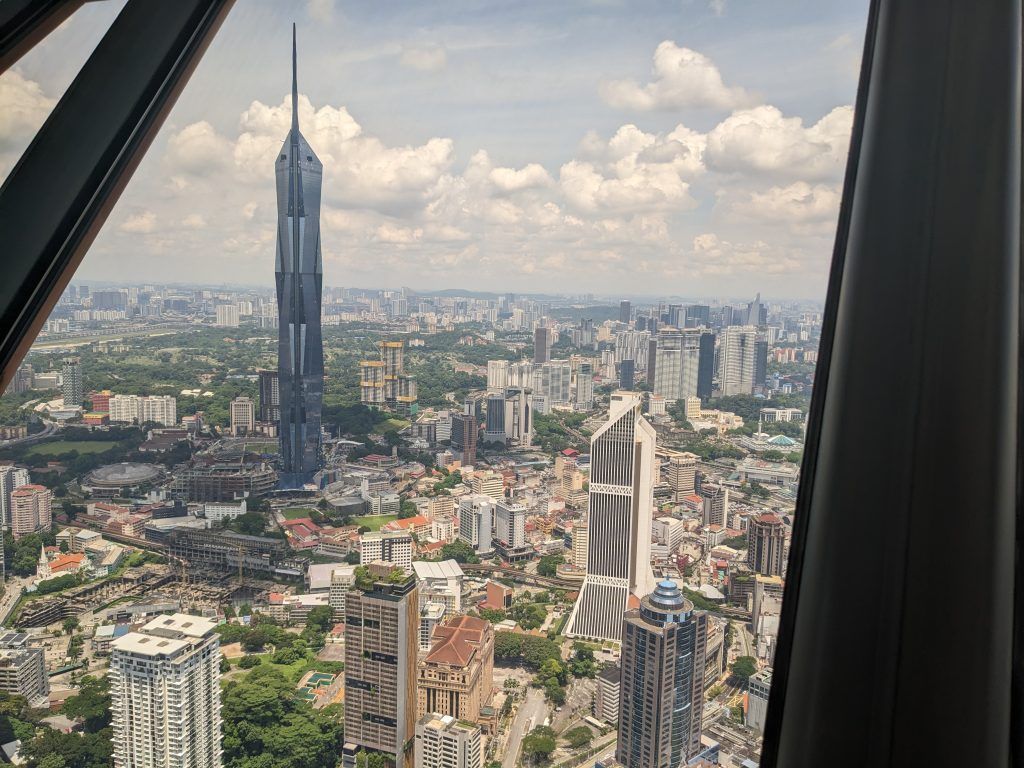
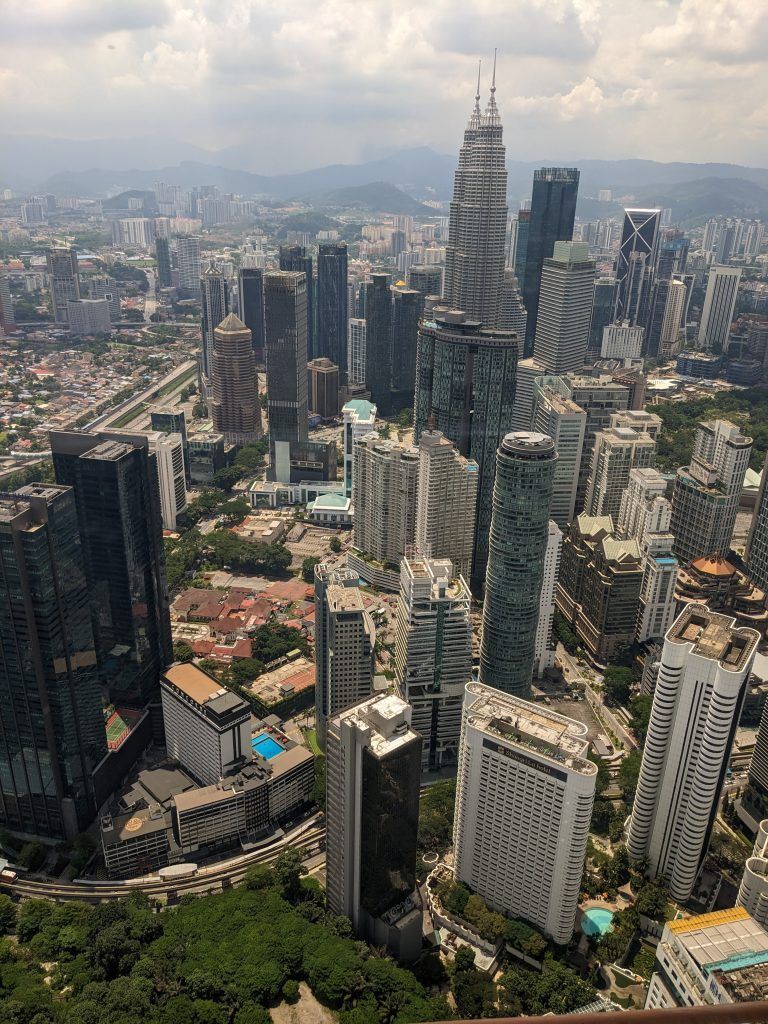
There’s a mini rain forest called KL Forest Eco Park that wraps around the same hill and has some nice trails and a 200 meter long canopy walk.
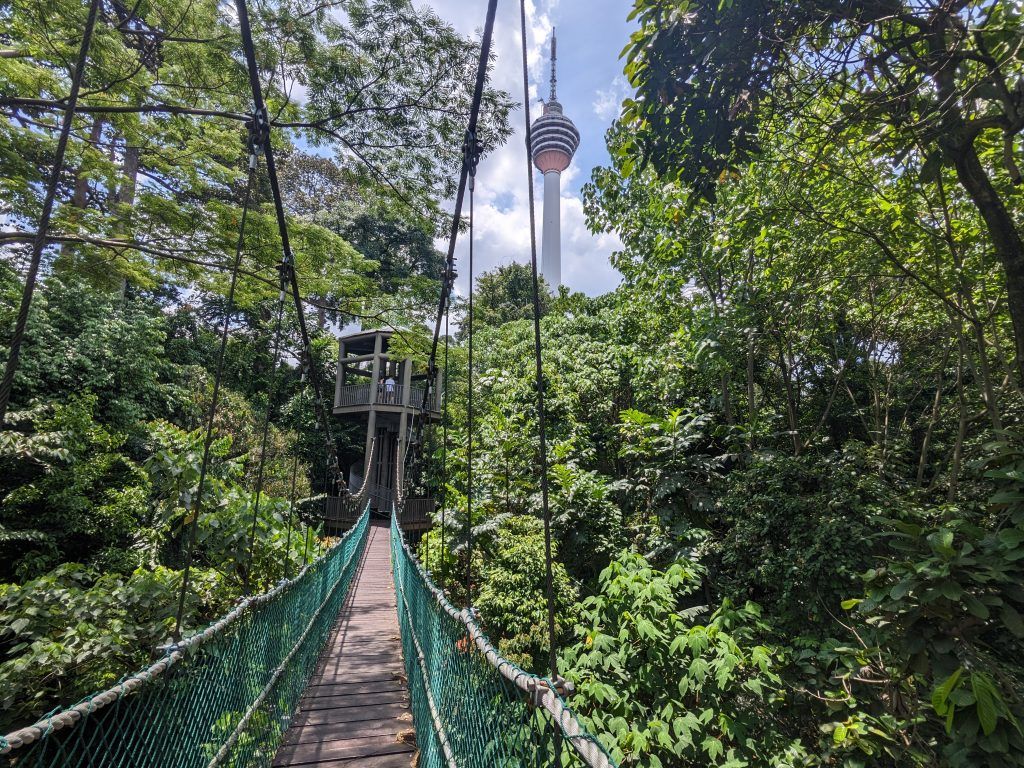
Kuala Lumpur Food Tour
Malaysia, and Kuala Lumpur especially, is known for having excellent food. Malaysia’s diverse population, as well as its historical importance as a center of trade in Southeast Asia, means that the cuisine here is incredibly varied and complex. Kuala Lumpur food includes everything from traditional Malay dishes to southern Chinese specialties to recipes originally from India.
So I did a 4.5 hour walking food tour. We ended up having the following 18 dishes on the tour (as sent to us by the guide after the tour): “Fruits, Salak, Rambutan, Longan, Mangosteen, Roti Canai, Mee Goreng Mamak, Teh Ais, Putu Bambu, Chendol, Durian, Asam Laksa, Mee Kari, Bihun Soup, Nasi Lemak, Mango Shake, Ikan Bakar, Apam Balik, and Satay sauce with Nasi Himpit – Indonesian and Malaysian.” The food was all amazing and I could barely move at the end.
We didn’t eat any of the meats at this restaurant, but it created a fascinating picture to start off our tour.
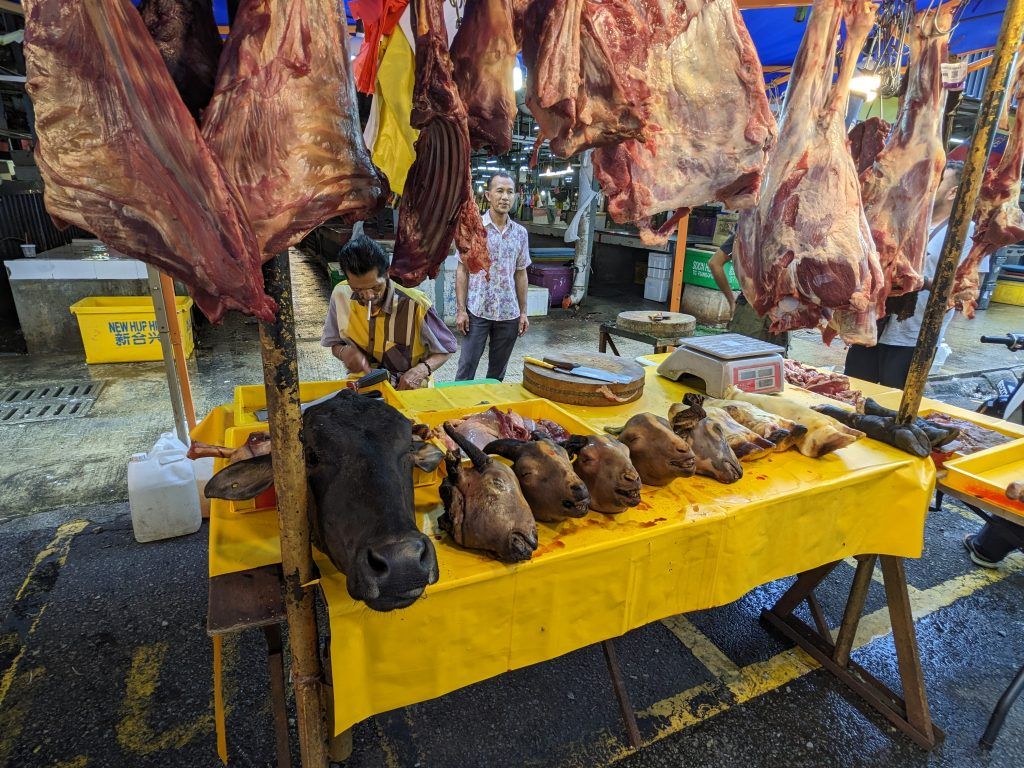
We all tried making roti, an Indian type of bread, but we all failed.
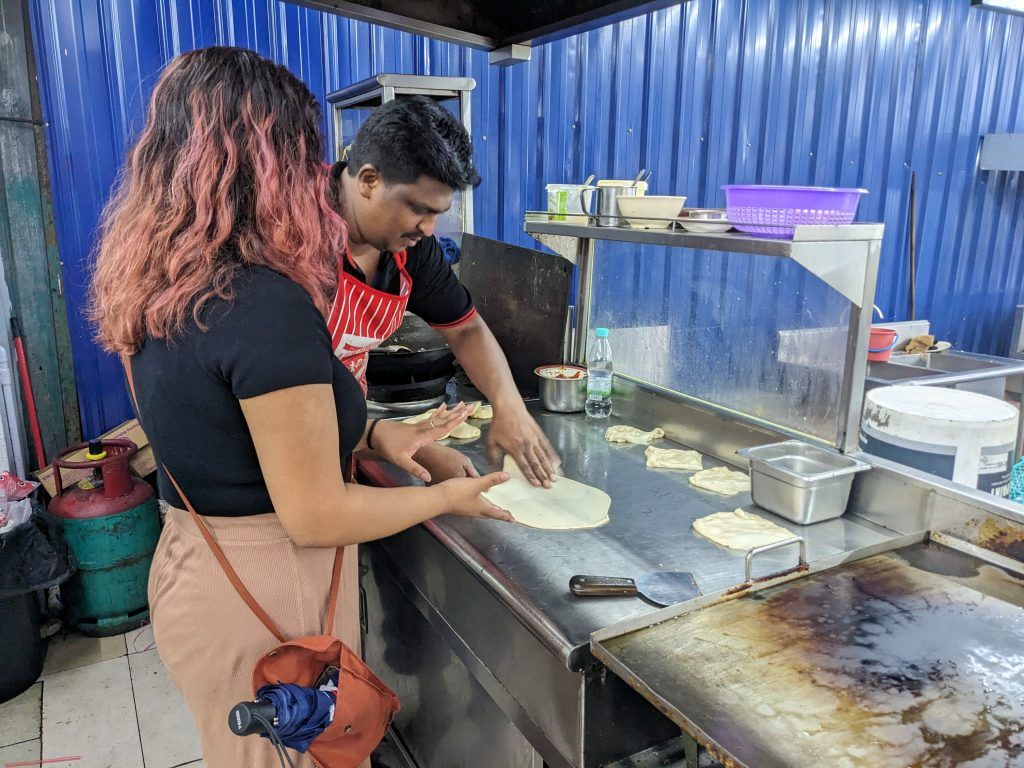
So the cook fixed our misshapen attempts and we still each had a nice little meal out of it.
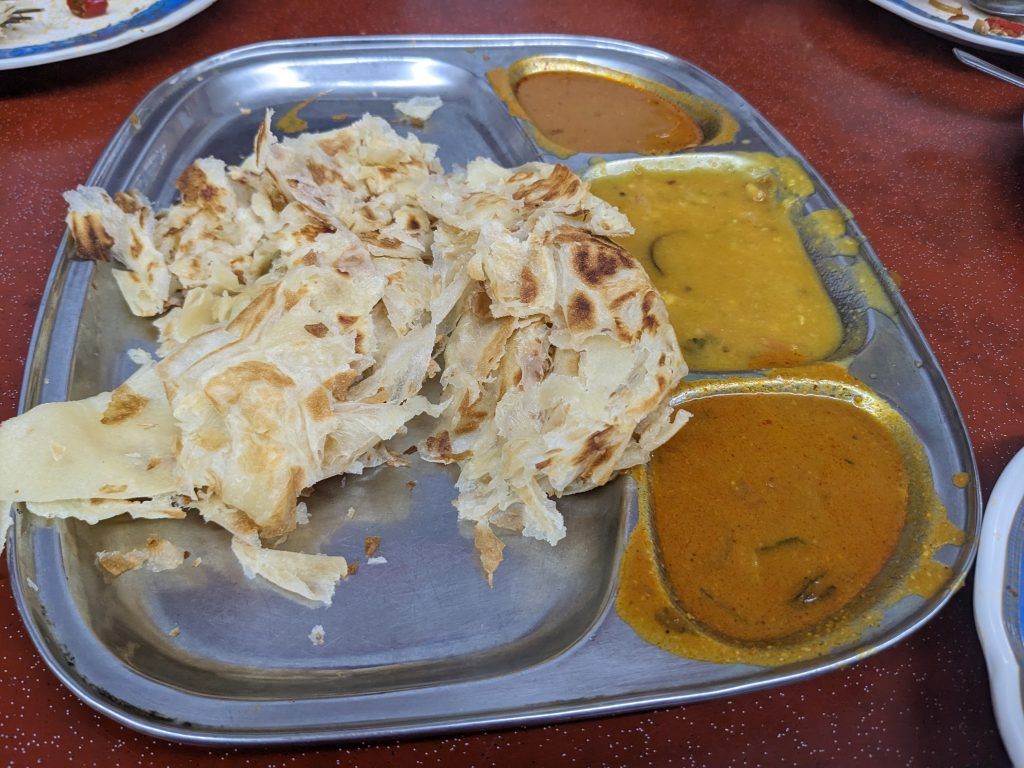
Mee Goreng Mamak: a fried noodle dish with fried tofu, beans sprouts, slices of potatoes, and some seafood. Notice the red chilis off to the side. The dish was spicy enough without throwing those in.
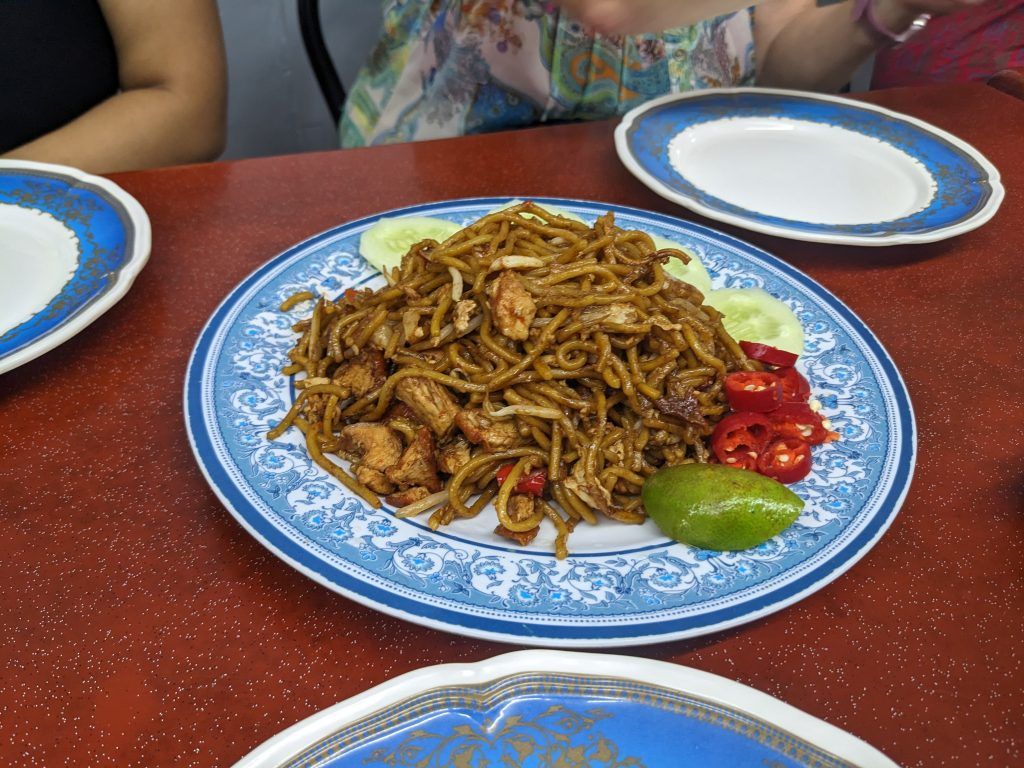
Asam Laksa: a flavorful, tangy, and spicy Malaysian fish based rice noodle soup.
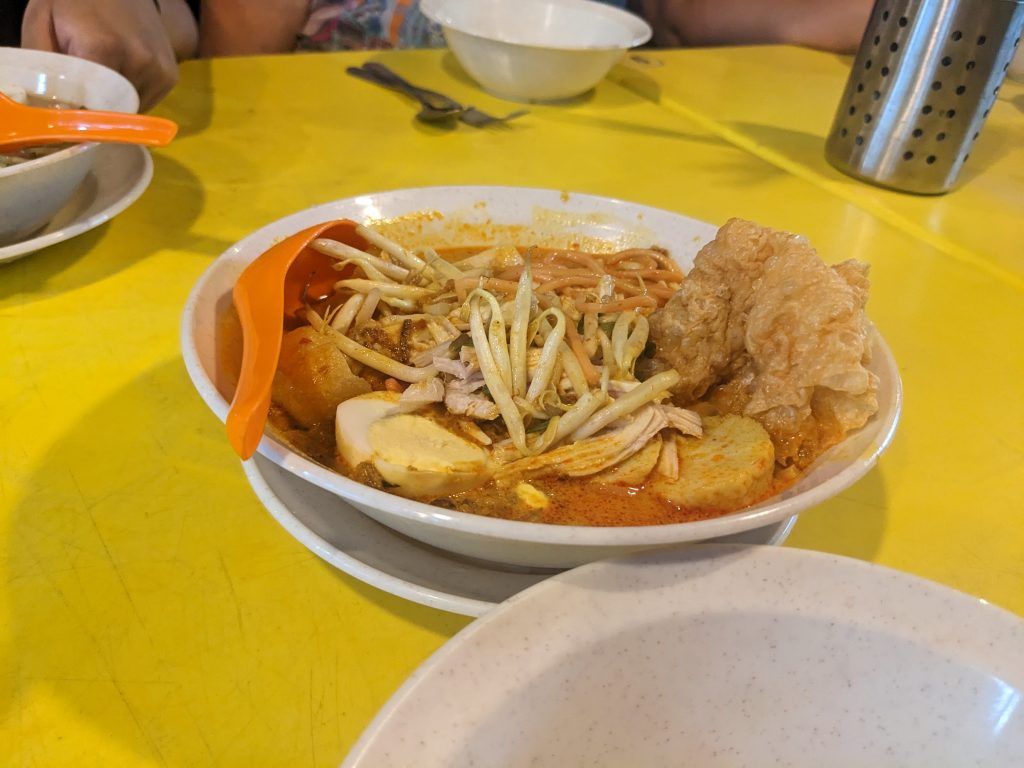
Chendol: an iced sweet dessert that contains droplets of green rice flour jelly, coconut milk, mangos, and palm sugar syrup. With some durians in a bowl on the side. I loved the durians. Most of the group didn’t.
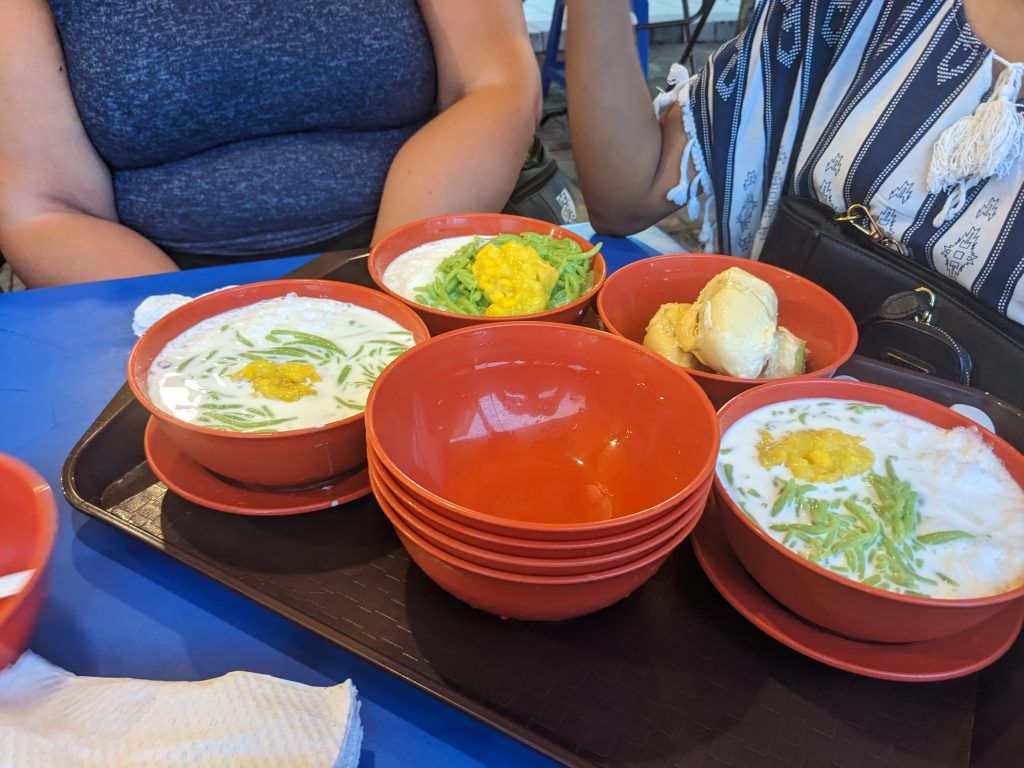
Some bambu: rice flour stuffed with palm sugar and steamed in bamboo leaves.
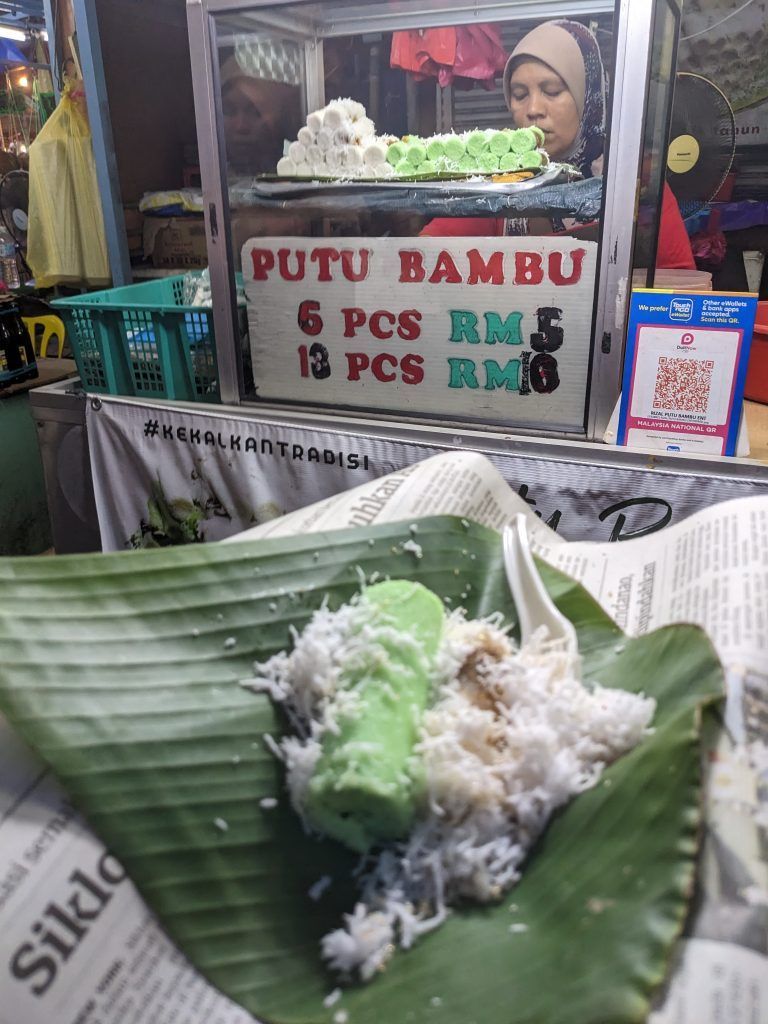
Some nasi lemak, which she said is the national dish of Malaysia. The coconut taste in the rice with the other spices in the chicken were really nice. And the rich mango shakes we had with this were wonderful.
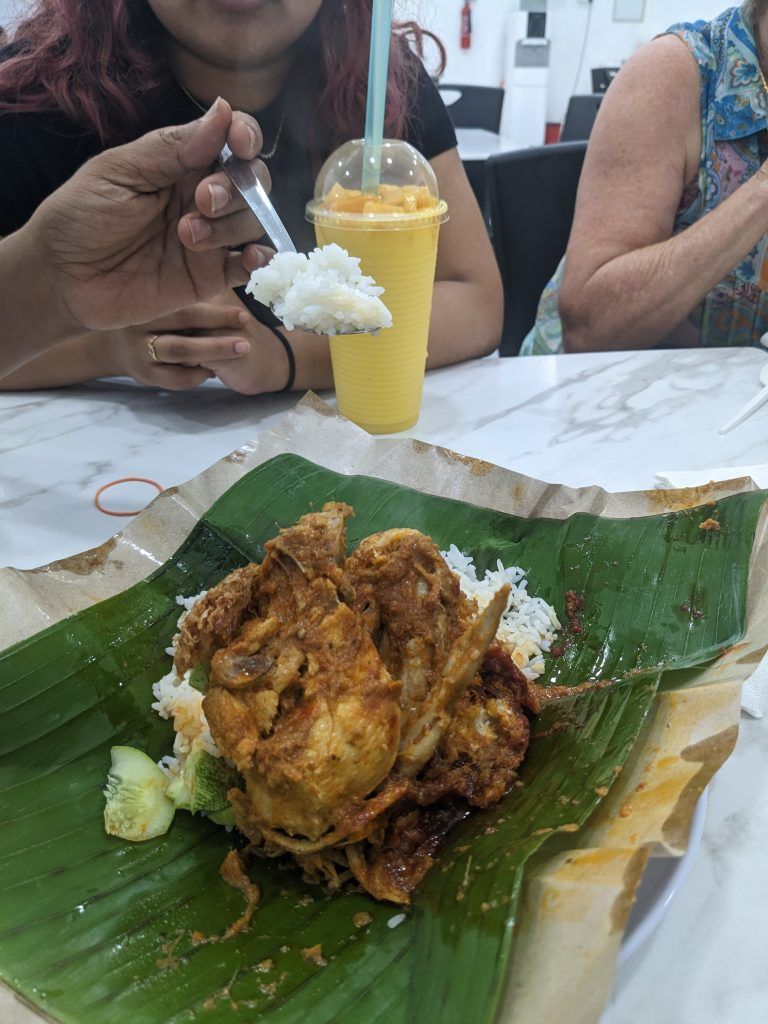
Batu Caves
Possibly the most unique experience in Kuala Lumpur is a visit to the Batu Caves. It’s a series of semi-open caves estimated to be over 400 million years old. They also include a couple of nice, small Hindu temples in each cave which were installed around 1890.
Guarding the long 272 step staircase to the entrance of the first cave is an enormous golden statue of Murugan, the god of war and knowledge. It’s over 40 meters tall and needed more than 300 litres of gold paint to cover it.
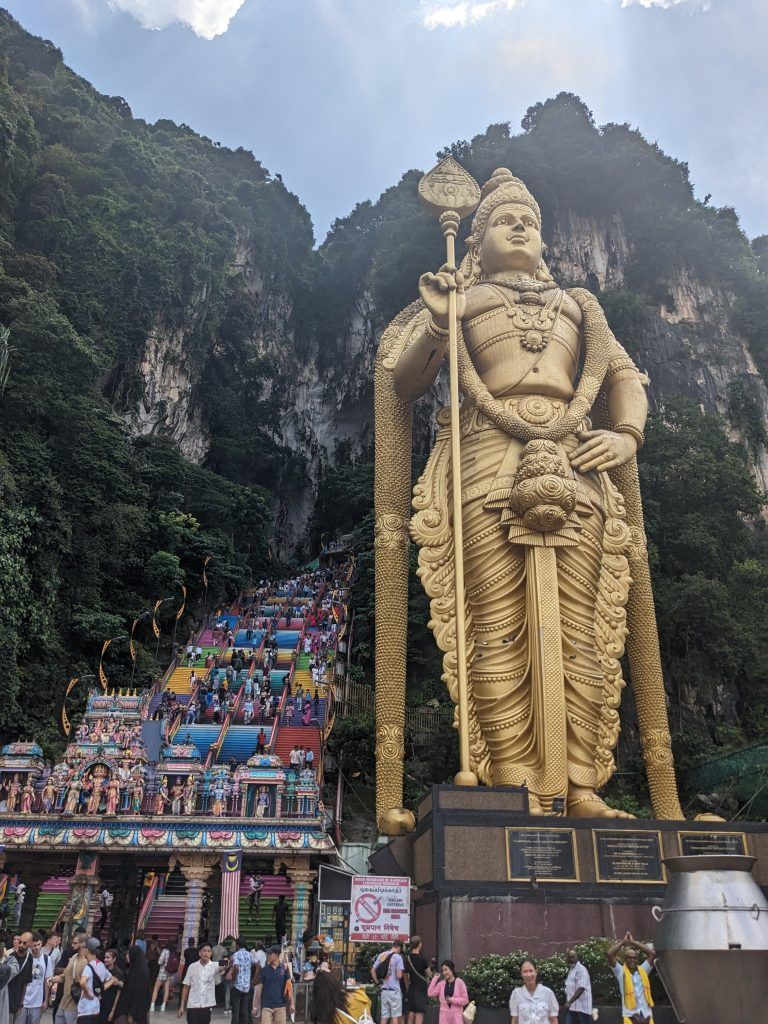
The first cave is huge and mostly enclosed.
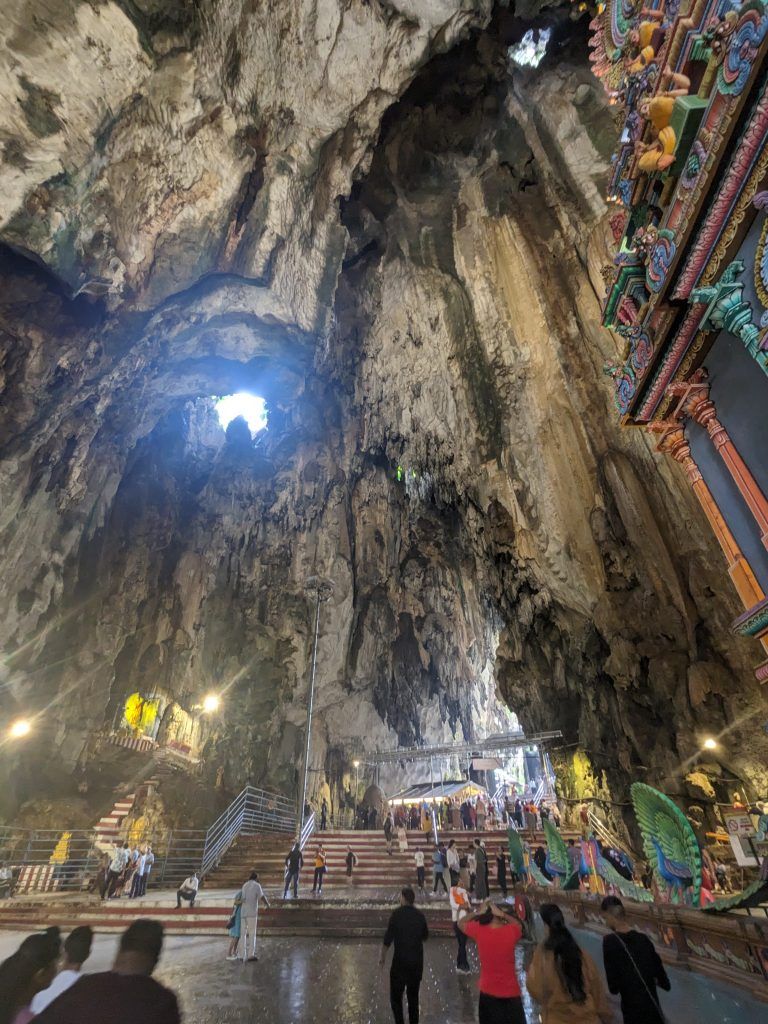
A further set of short stairs leads to the second cave, which is mostly open at the top which creates a stunning natural gallery to a small Hindu temple.
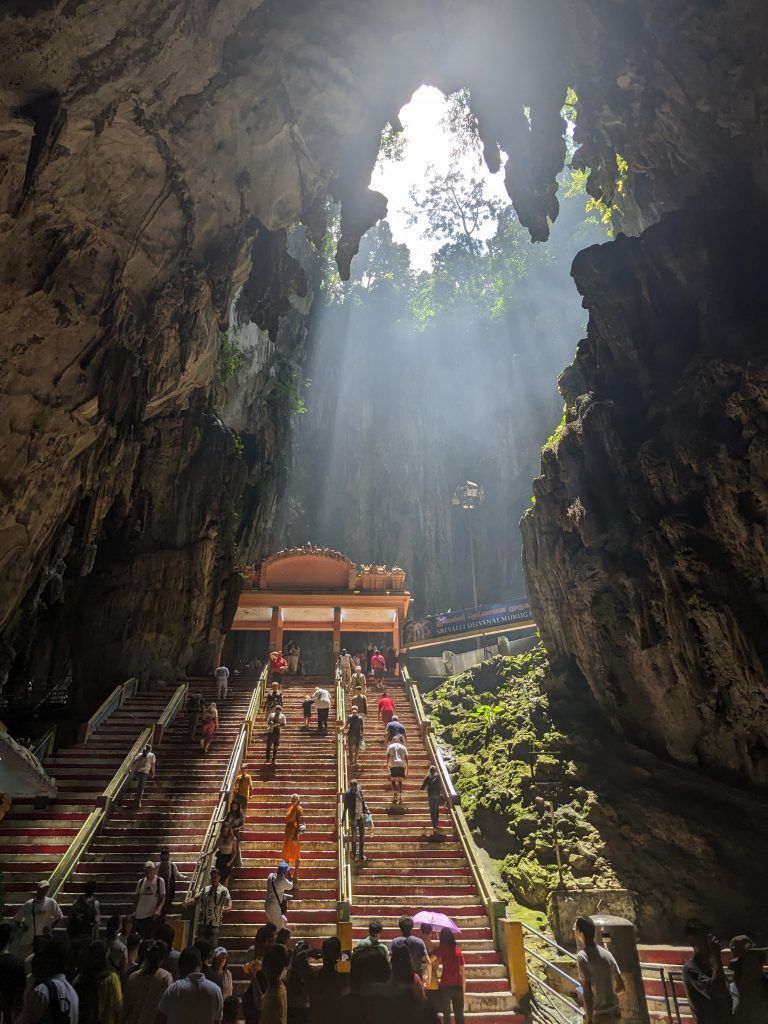
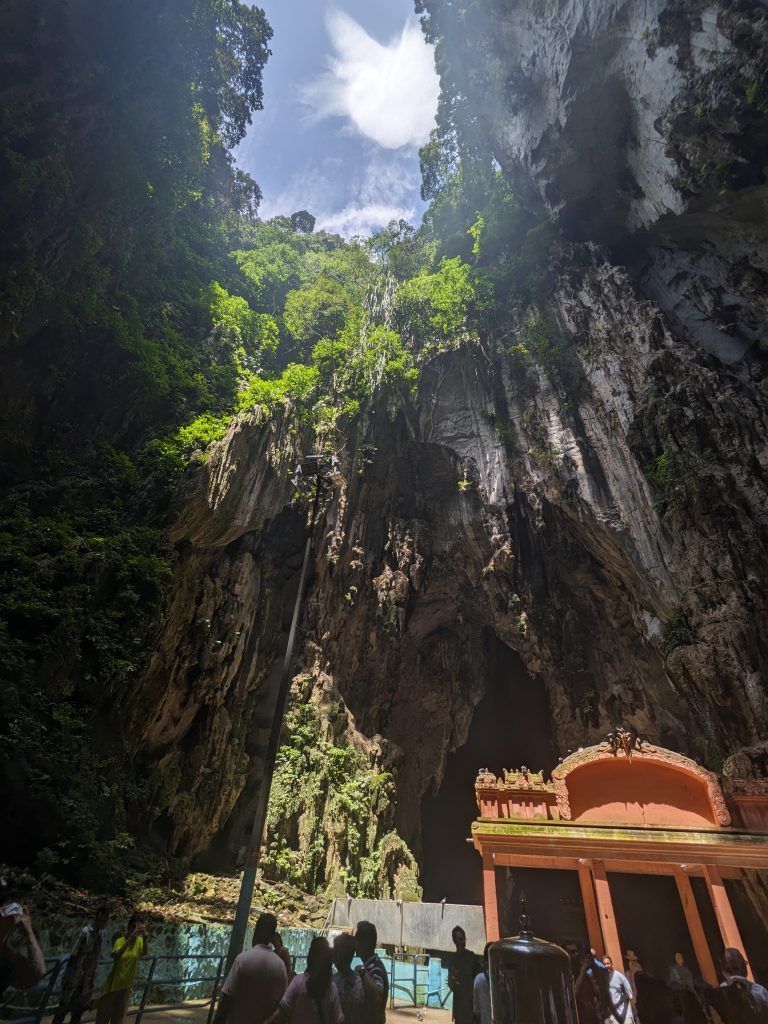
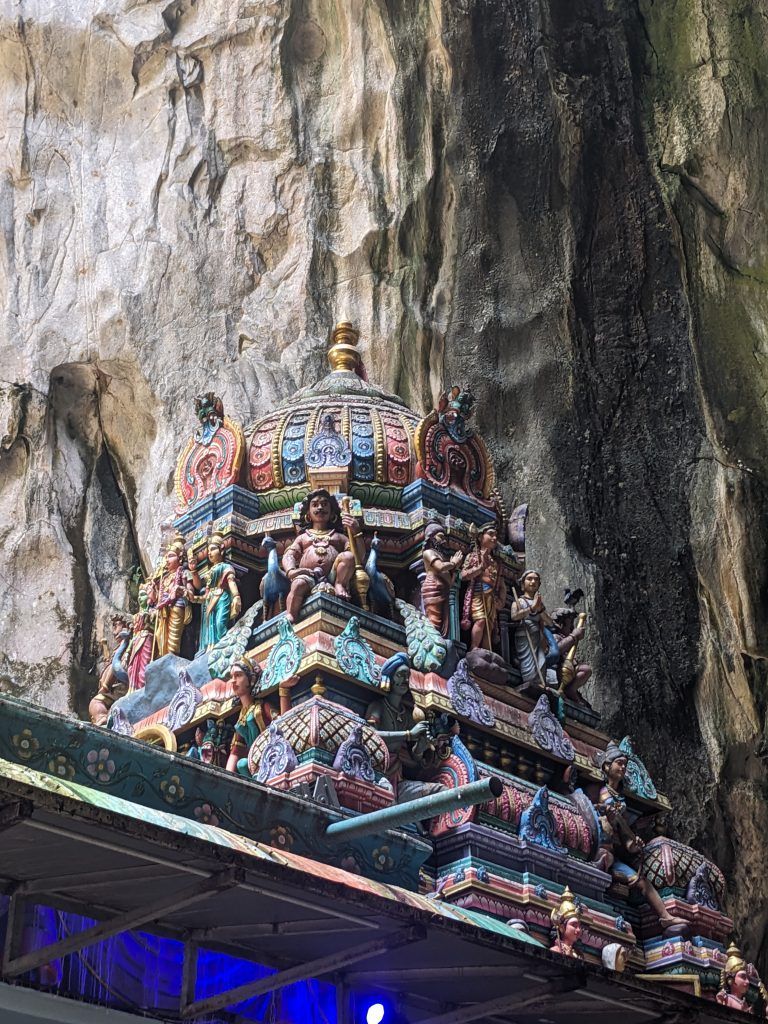
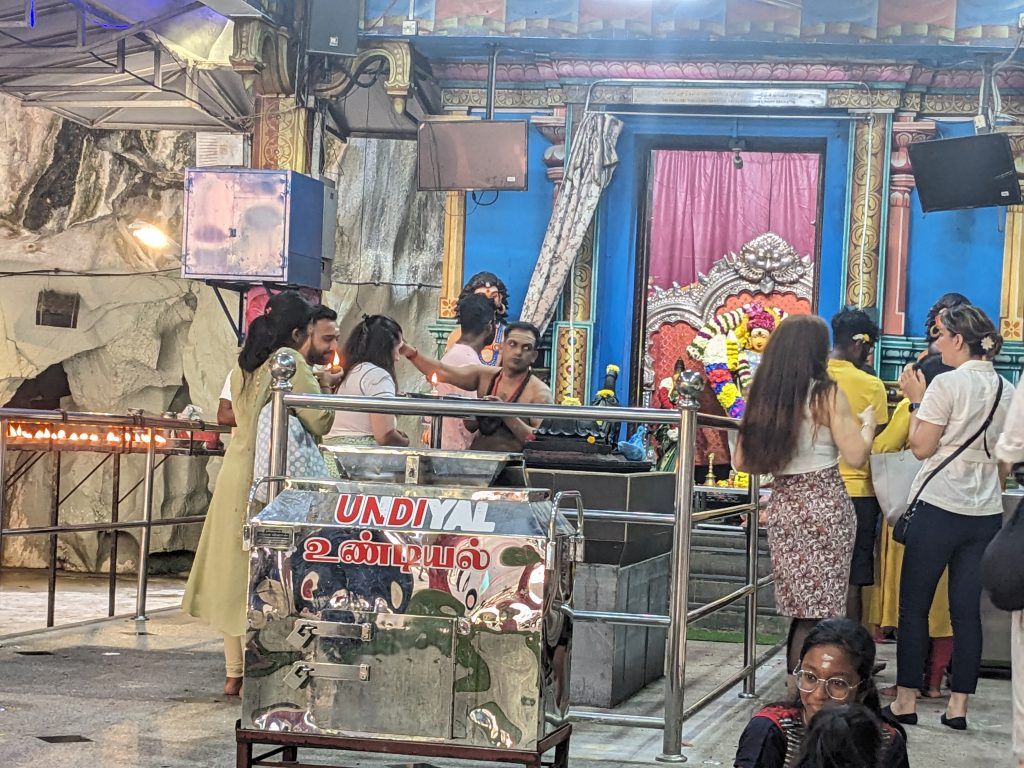
There are monkees running all over the stairs to the first cave. Unlike the aggressive monkees at some of the temples in Bali, however, these monkees are pretty chill.
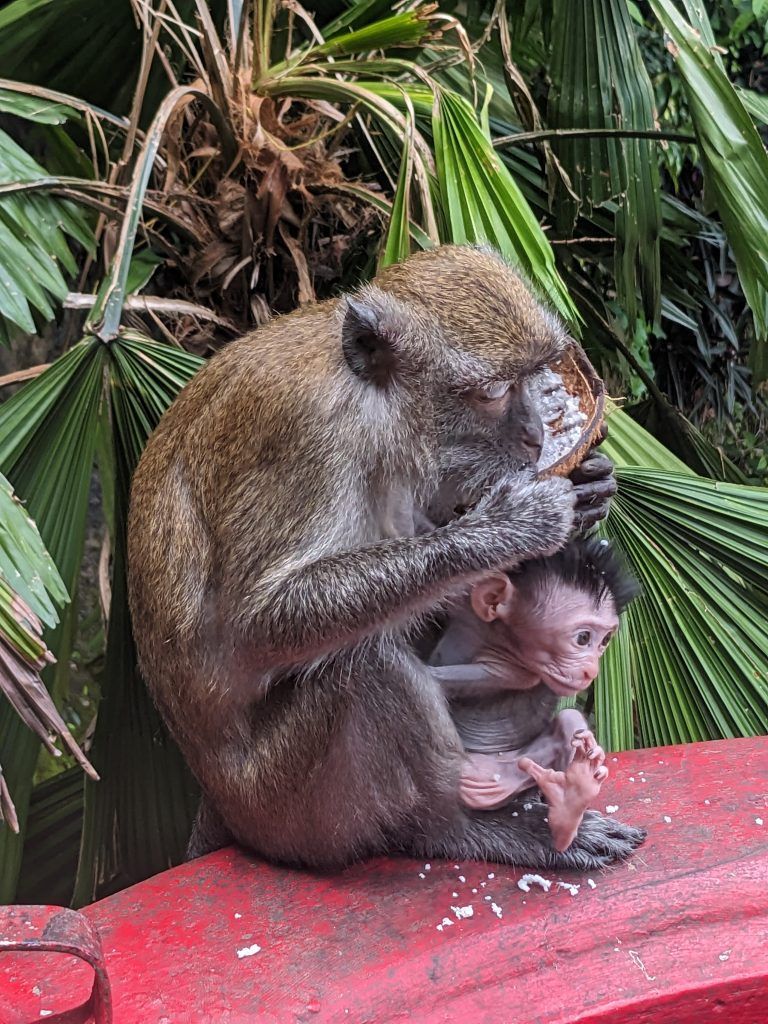
KL Bird Park and KL Butterfly Park
The KL Bird Park is one of the world’s largest covered bird parks. It houses more than 3,000 birds representing more than 200 species in an enclosed aviary. It’s a really nice place as most of the birds are not in cages and are walking amongst the guests.
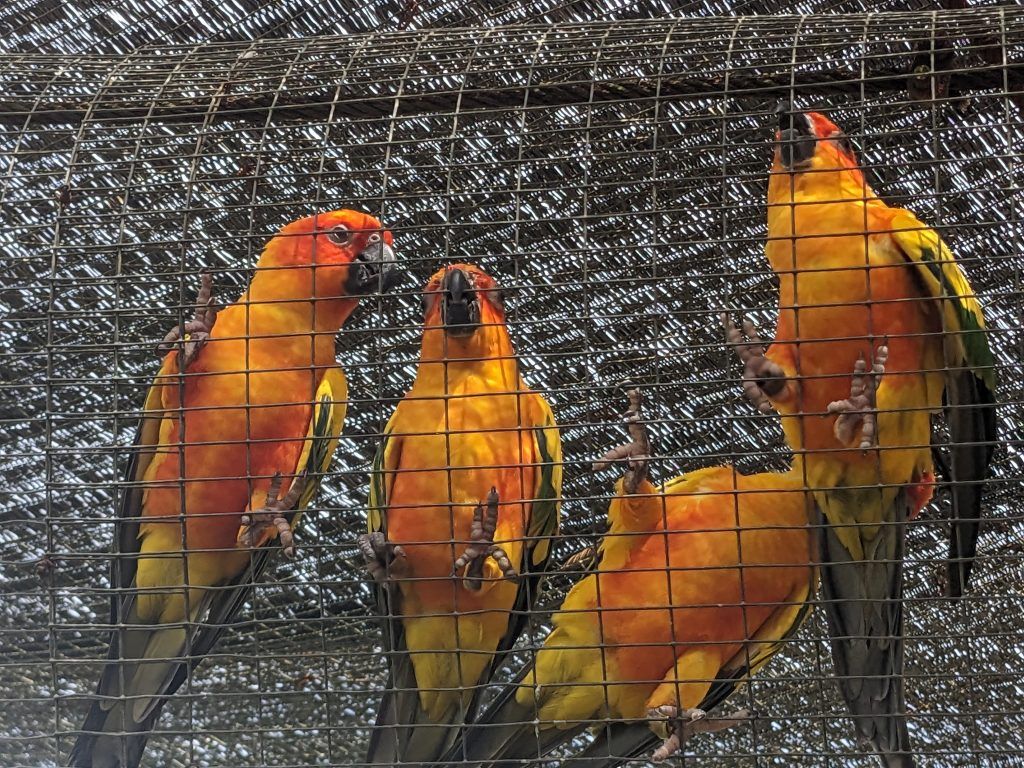
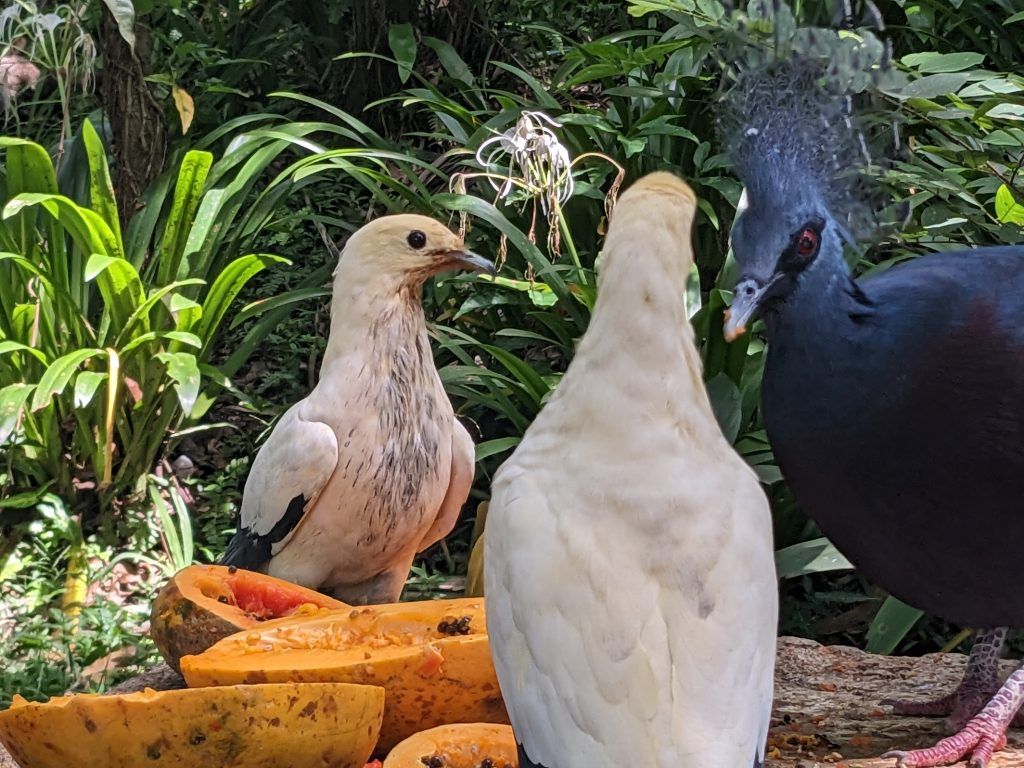
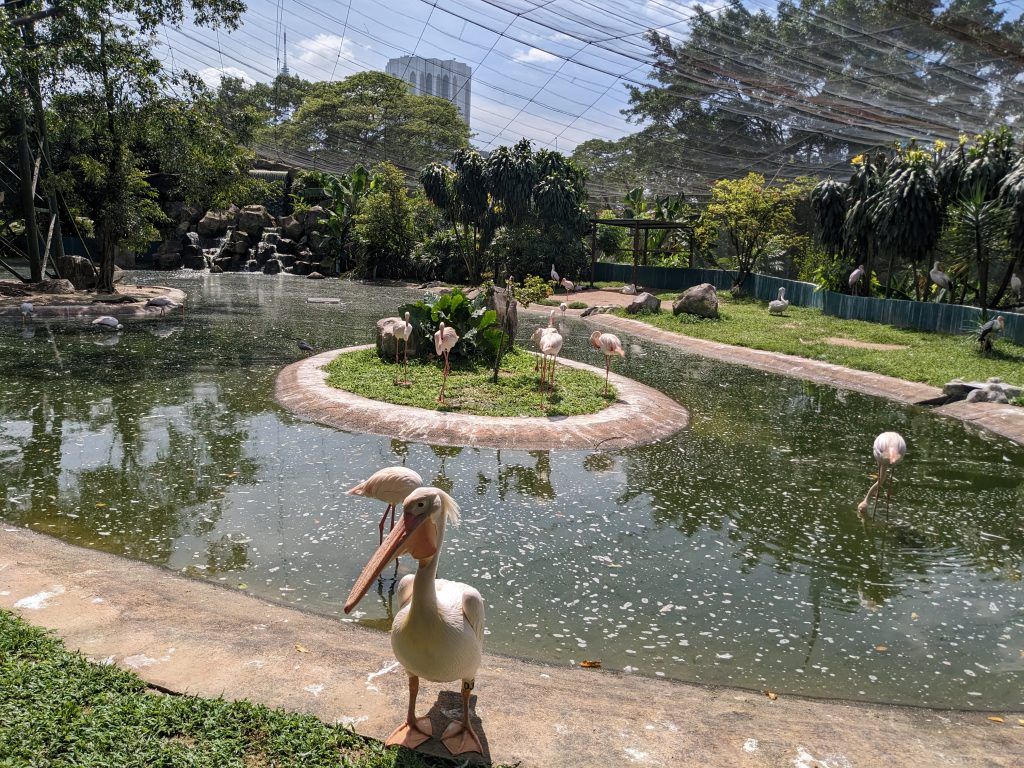
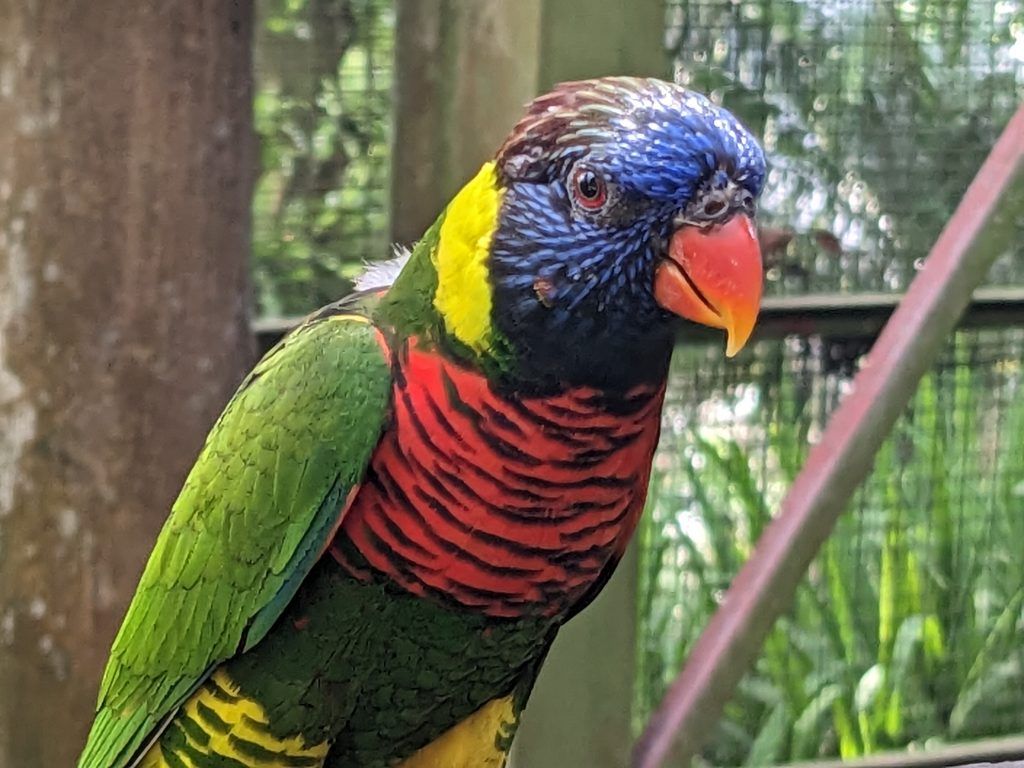
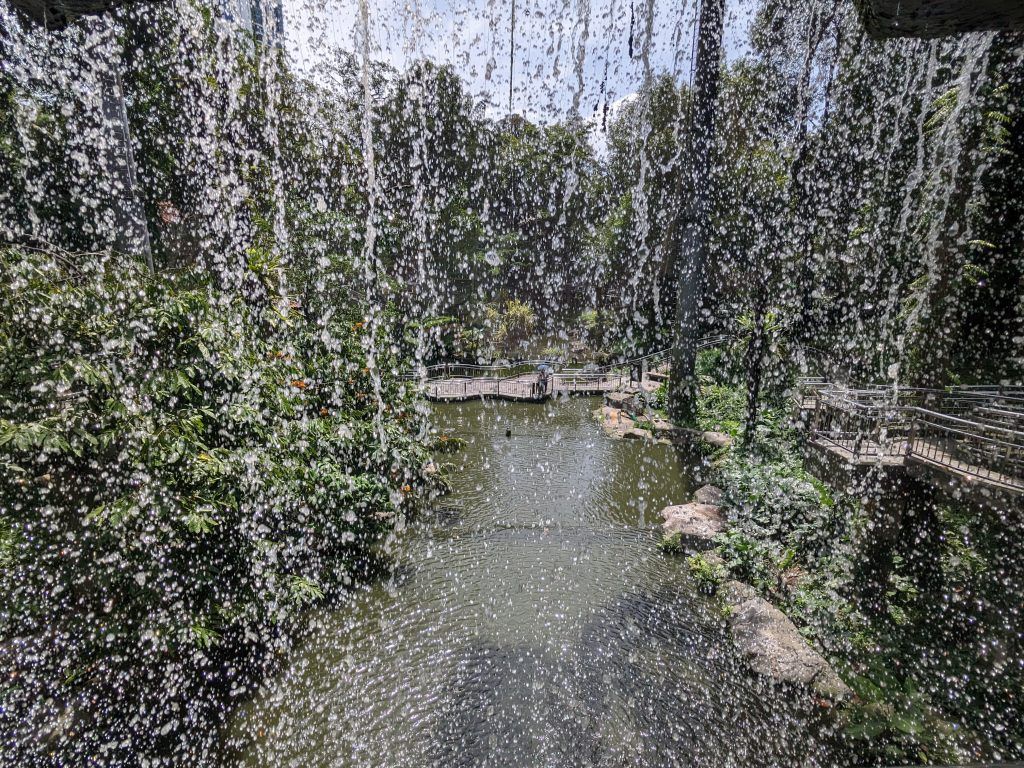
Right nearby is the Kuala Lumpur Butterfly Park. It’s one of the largest such houses in the world, spanning over an area 80,000 square feet. They say they have over 5,000 butterflies. There’s also other insects and exotic plants. It’s a wonderful compliment to the bird park.
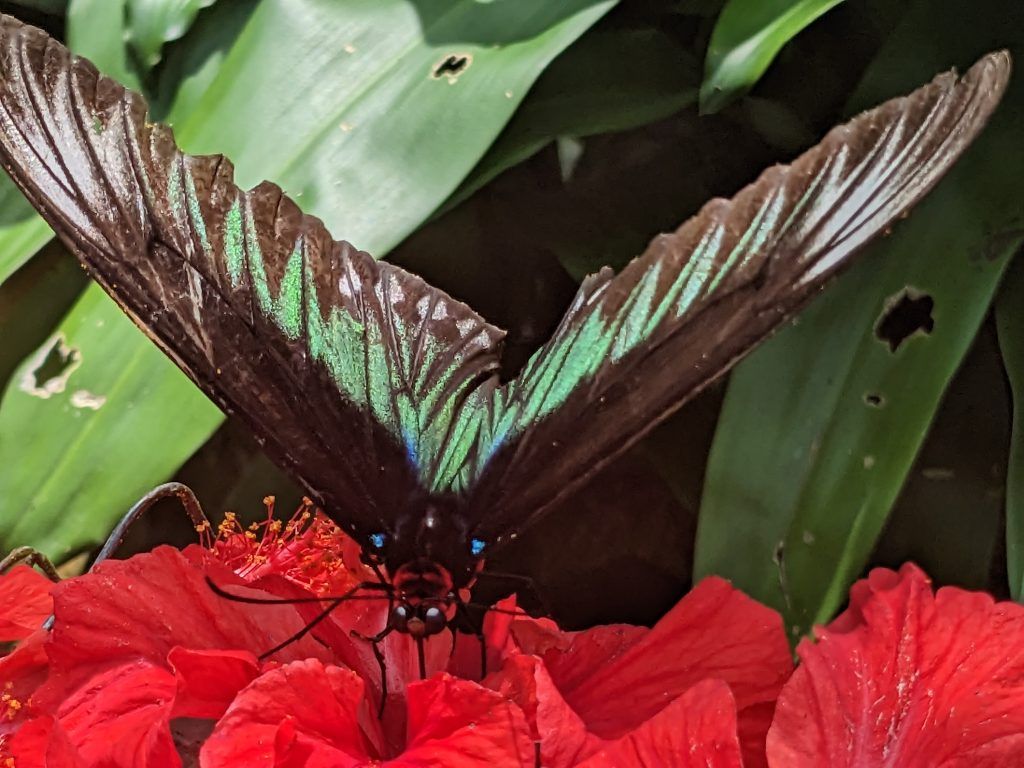
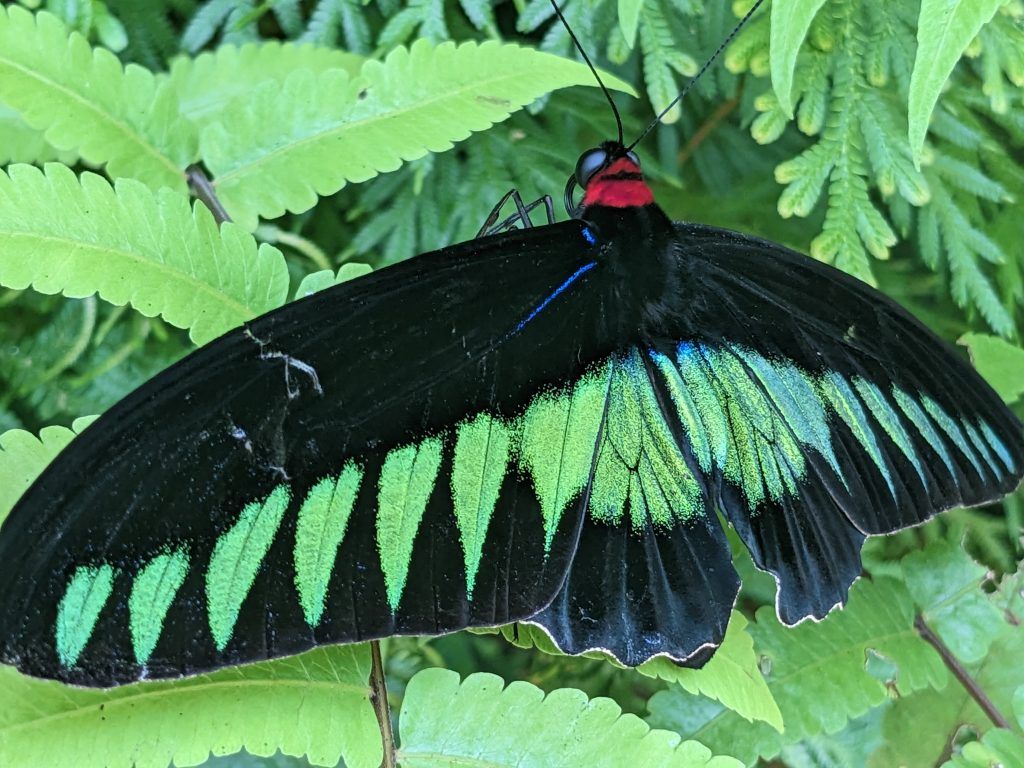
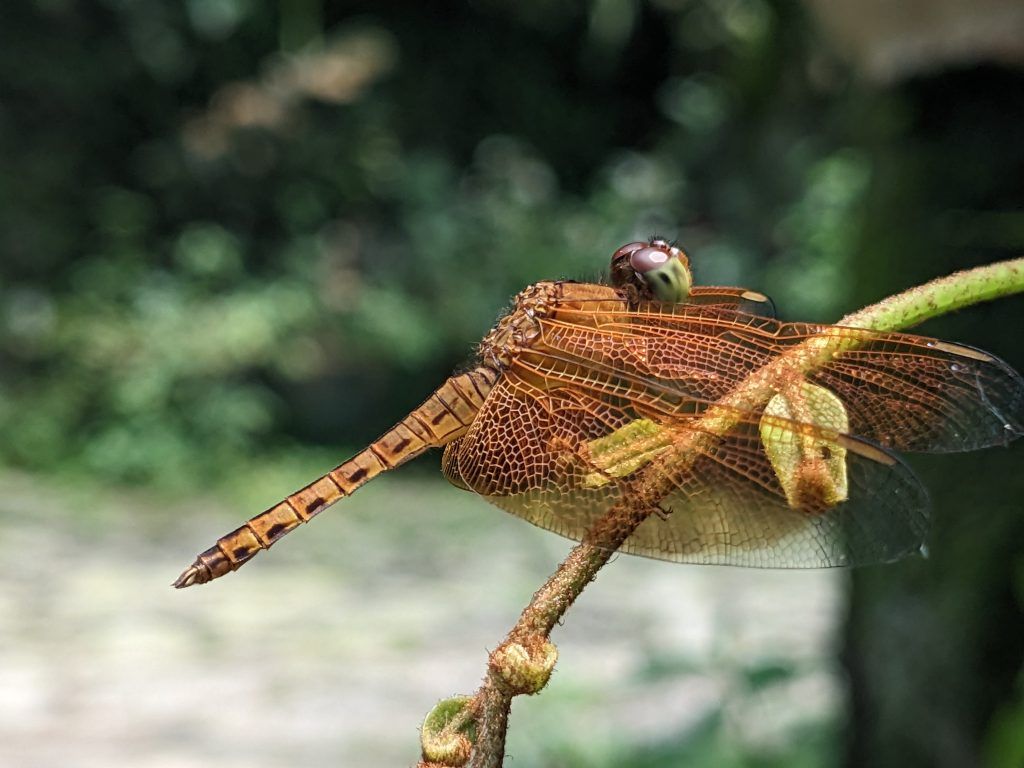
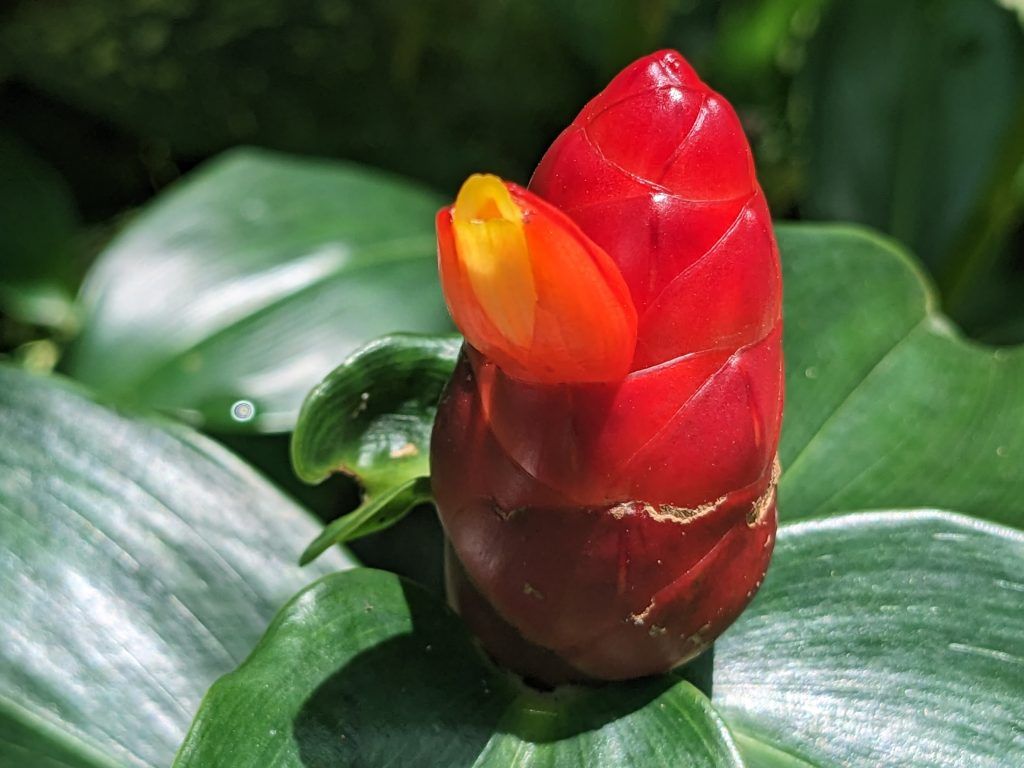
Aquaria KLCC
There is also abundant underwater wildlife displayed in Kuala Lumpur. Featuring 60,000 square feet in two levels with an underwater tunnel the length of a football field, Aquaria KLCC houses over 250 different species and over 5,000 land and aquatic animals from Malaysia and around the world. The tunnel has all kinds of fish, but the stars are the sharks and rays that swim above you as you move through the tunnel.
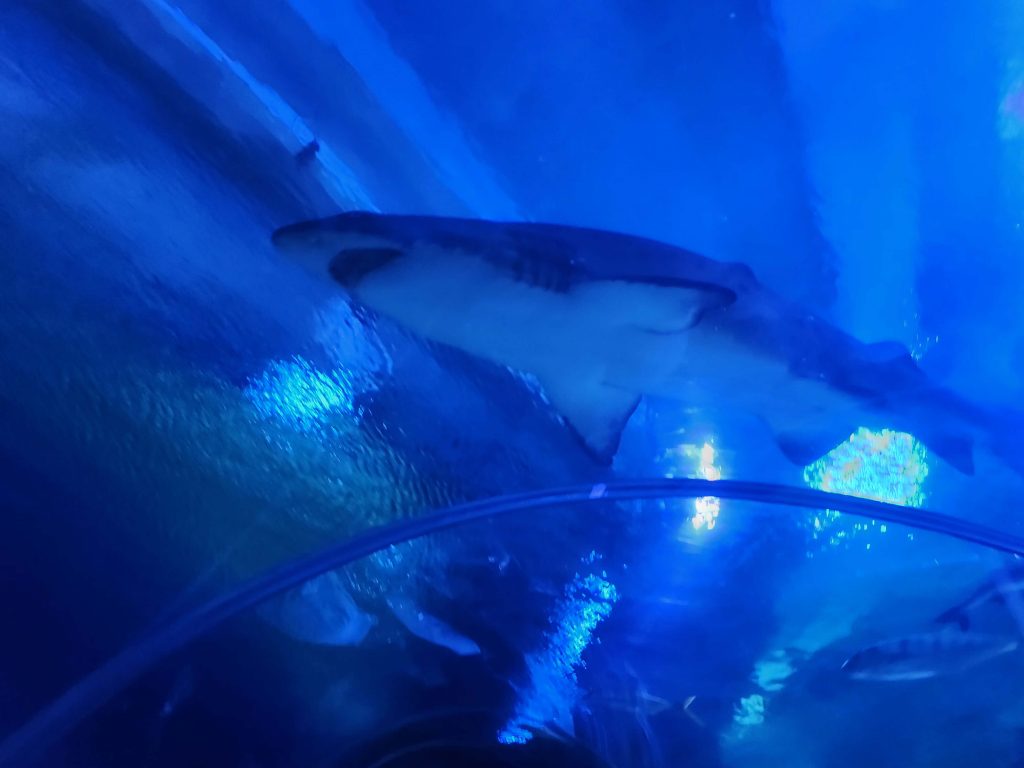
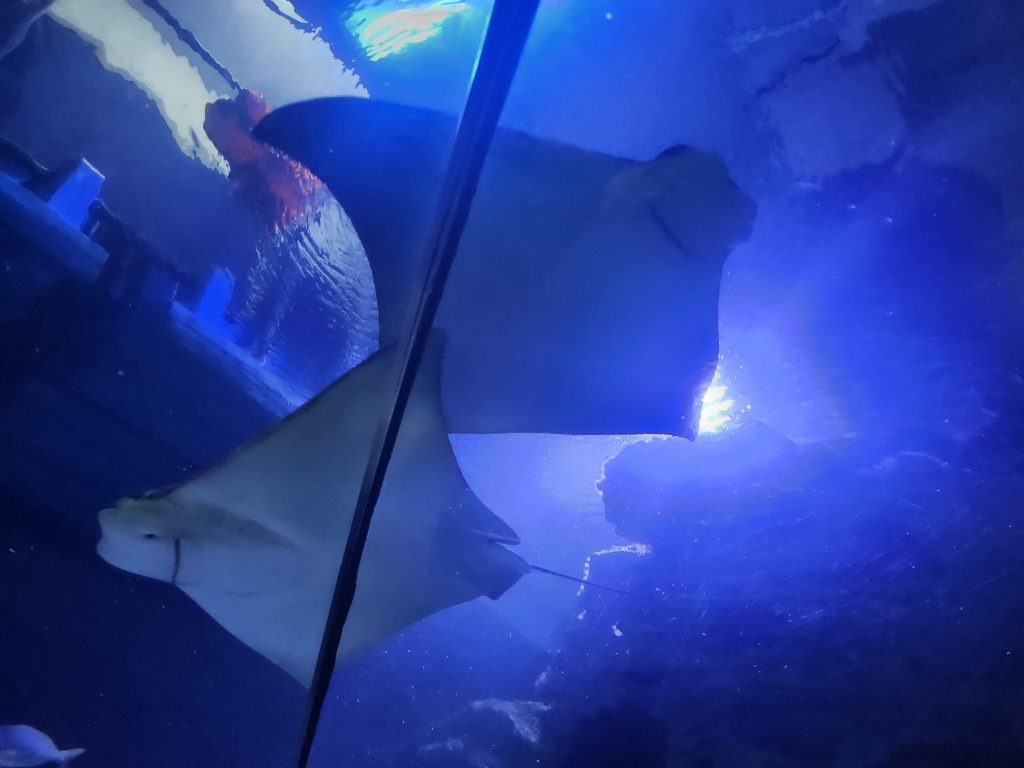
And you also get to see the staff doing maintenance work on the facility.
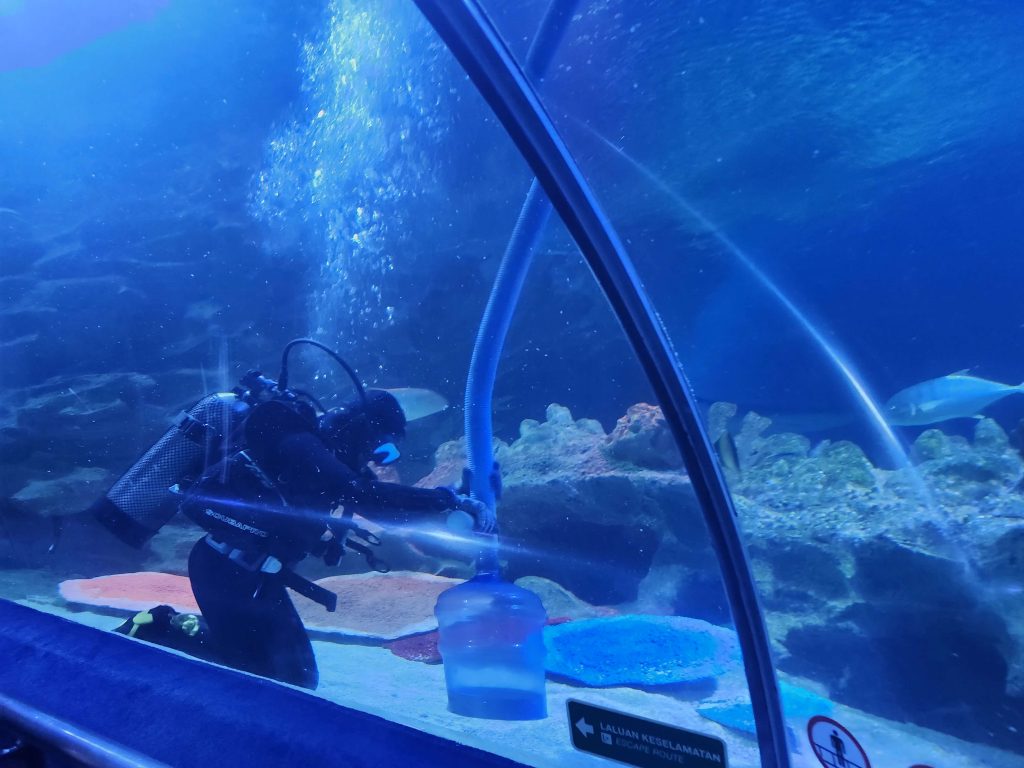
National Gallery of Art
Kuala Lumpur’s National Gallery of Art is a compact three story museum mainly focused on local artists. There’s nothing overwhelmingly dramatic there, but it’s free and it’s a nice way to spend a couple of hours getting a rare taste of artistic culture amongst the medley of the other wonders of SE Asia.
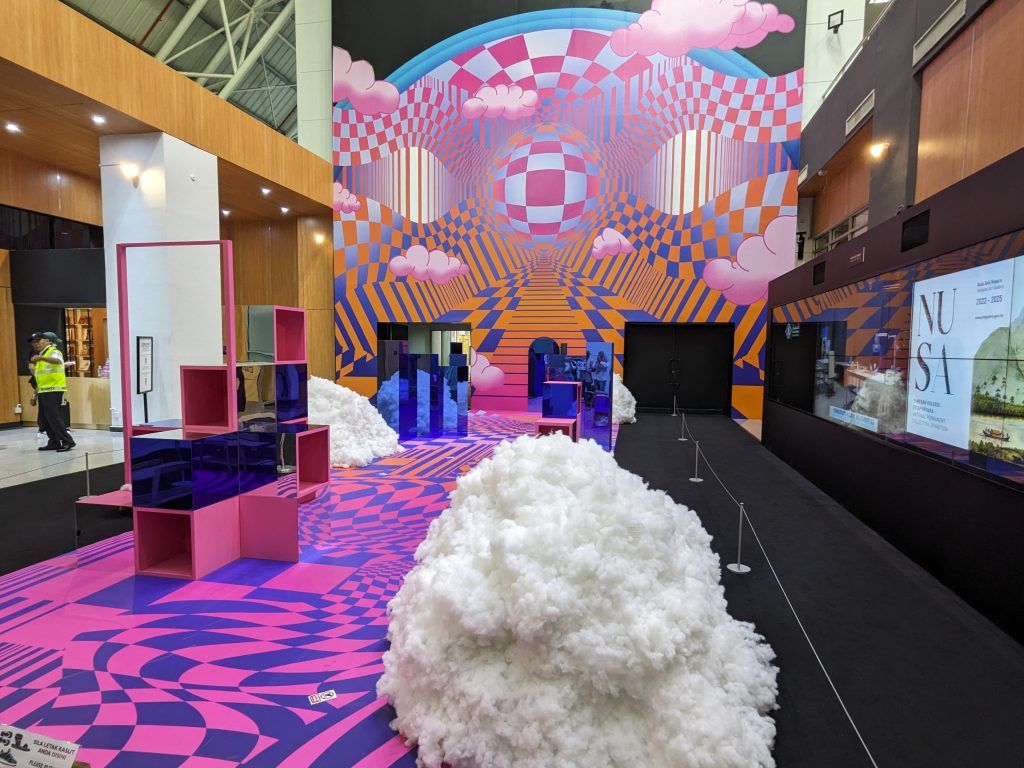
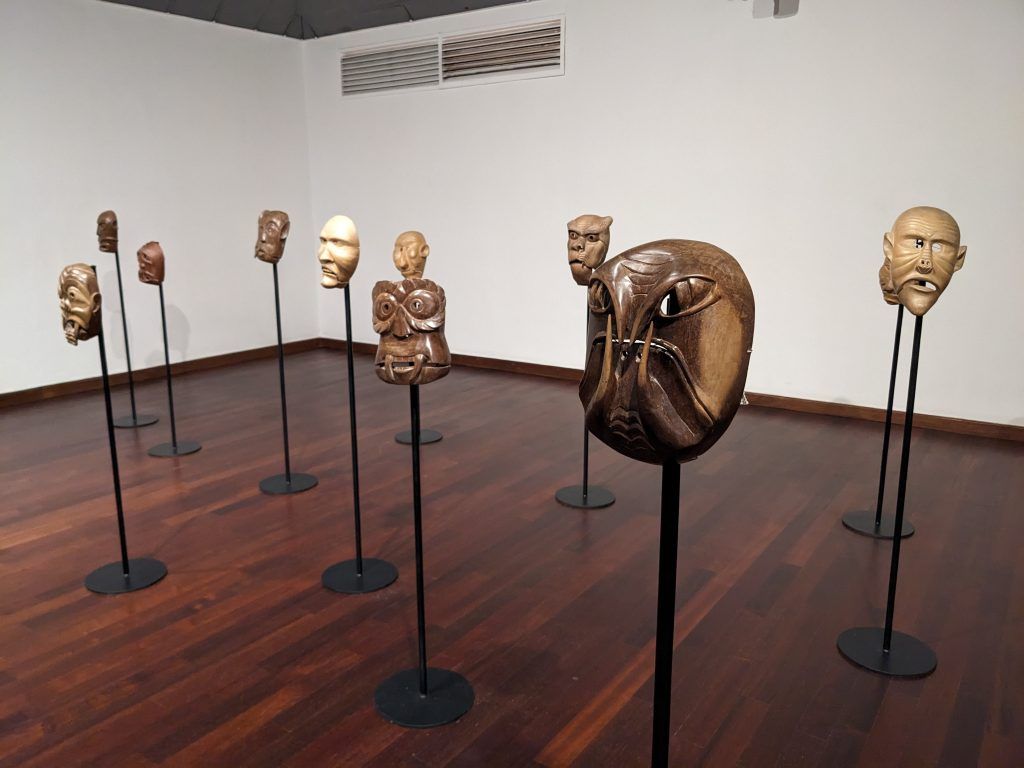
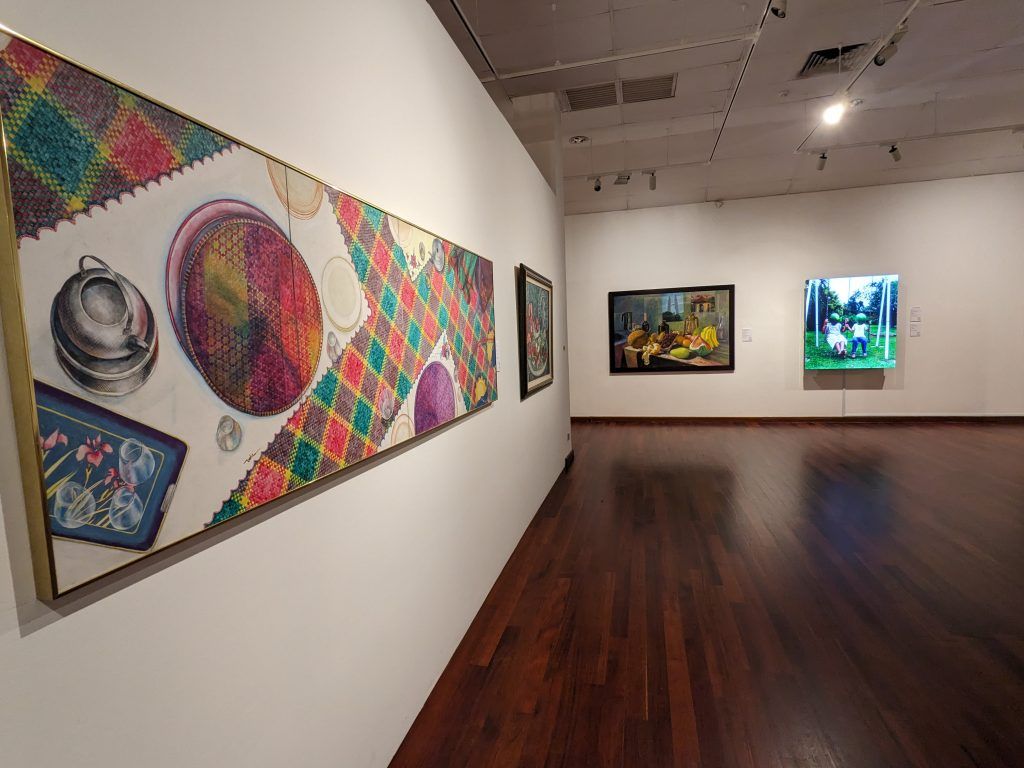
UR-MU
UR-MU is a quirky little art gallery showcasing Malaysia’s artists. It’s in a building that was once a Chinatown shophouse.
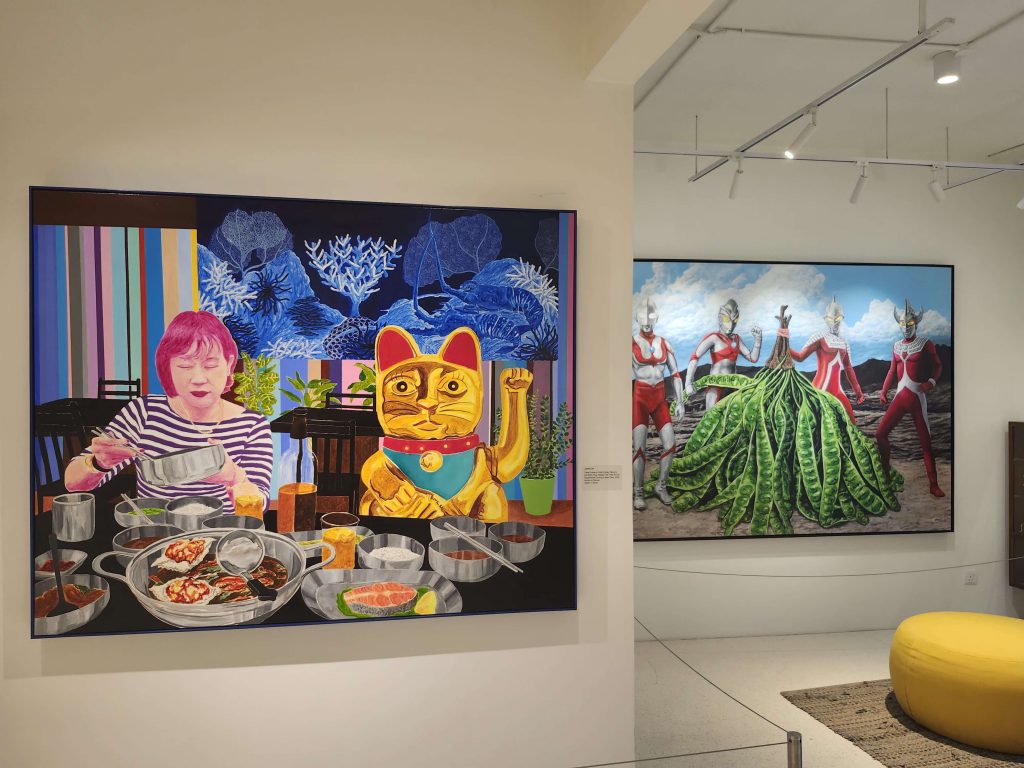
This tiger was actually designed and painted by Ronny Woods of the Rolling Stones. It turned out he studied both art and music at university before becoming a professional musician.
